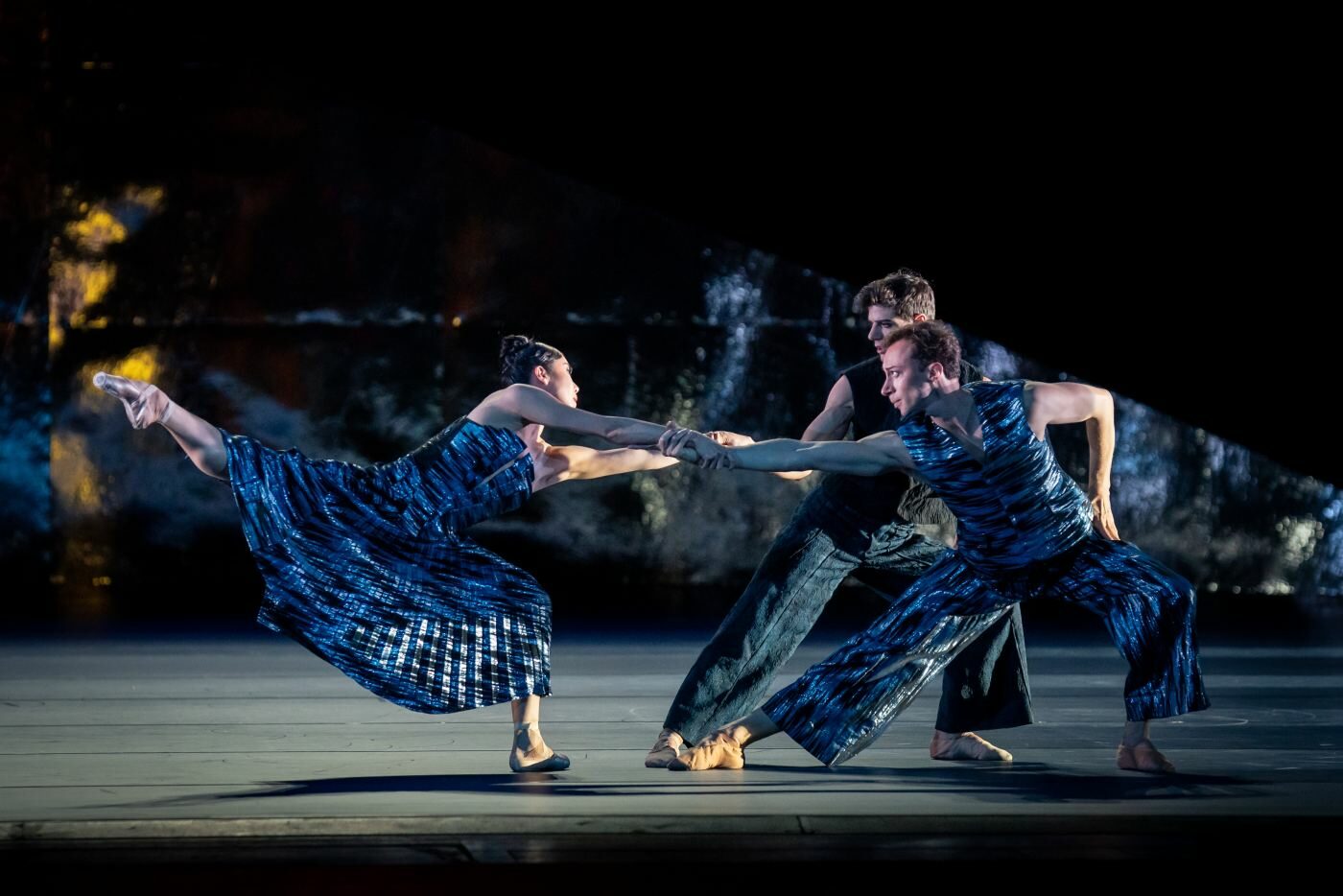Horst Koegler in Conversation with Hans van Manen in 1982
Altes Kammertheater
Stuttgart, Germany
October 31, 2016
transcribed and translated by Ilona Landgraf
Copyright © 2016 by Ilona Landgraf
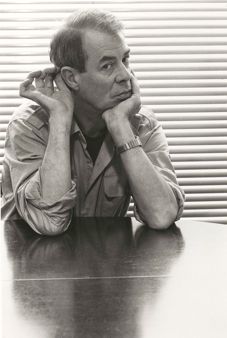 Horst Koegler (1927-2012) spoke with Hans van Manen in 1982 at the Altes Kammertheater in Stuttgart during an evening of the Noverre Society, which at the time was directed by Fritz Höver. This article was edited from an audiotape that was transcribed and translated into English by Ilona Landgraf.
Horst Koegler (1927-2012) spoke with Hans van Manen in 1982 at the Altes Kammertheater in Stuttgart during an evening of the Noverre Society, which at the time was directed by Fritz Höver. This article was edited from an audiotape that was transcribed and translated into English by Ilona Landgraf.
Photos courtesy of Dutch National Ballet, Ballett am Rhein, State Ballet Berlin, Stuttgart Ballet, Maryinsky Ballet and the Bolshoi Ballet.The portraits of Hans van Manen and Horst Koegler are by Gert Weigelt. Please click to enlarge.
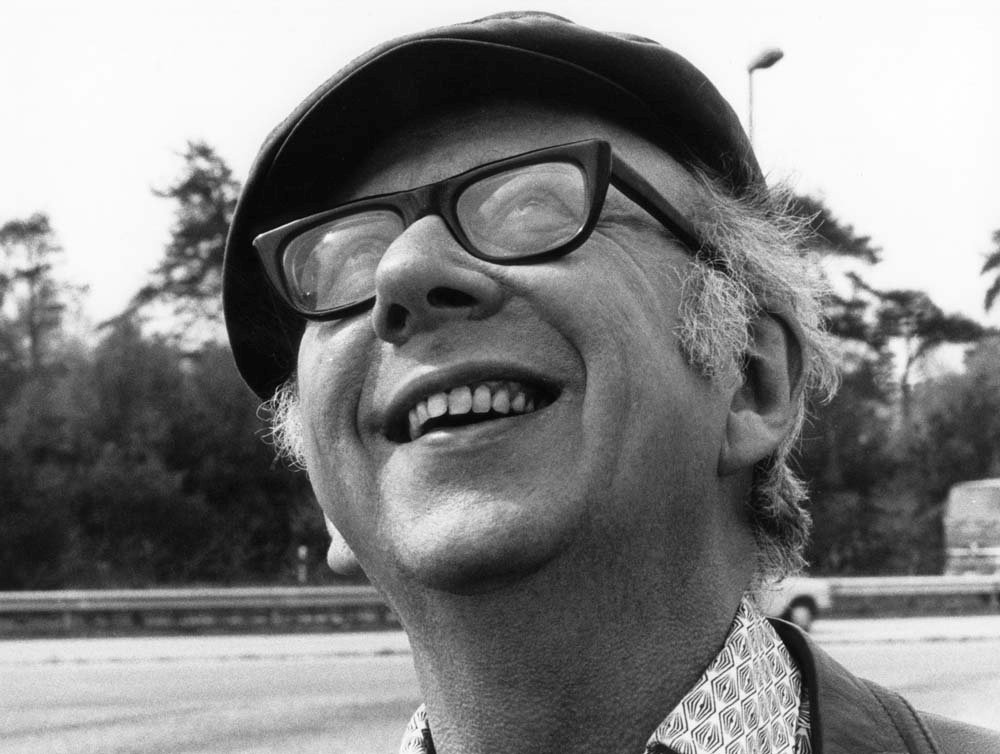 Hans van Manen: You ask how I came to speak my German. I think that’s an inborn skill. My mother was German, but we never spoke much German at home. Yet it must be innate because I can speak a quite good German without knowing that many words. What I heard from my mother were mostly nonsense tongue twisters like “Ein Student in Stulpenstiefeln stand auf einem spitzen Stein. Starrte stundenlang auf die still stehenden Sterne.” I think that was the way I learned German.
Hans van Manen: You ask how I came to speak my German. I think that’s an inborn skill. My mother was German, but we never spoke much German at home. Yet it must be innate because I can speak a quite good German without knowing that many words. What I heard from my mother were mostly nonsense tongue twisters like “Ein Student in Stulpenstiefeln stand auf einem spitzen Stein. Starrte stundenlang auf die still stehenden Sterne.” I think that was the way I learned German.
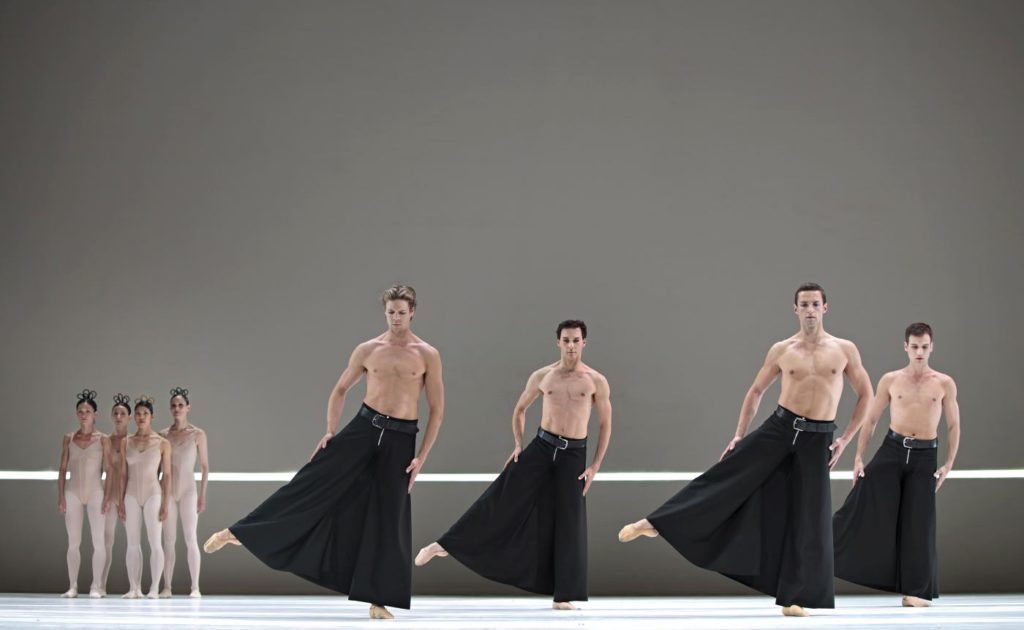 Horst Koegler: Was it your mother who brought you to dance? Had your family had any artistic background or was there some other role model? Did you see any particular performance that motivated you to become a dancer?
Horst Koegler: Was it your mother who brought you to dance? Had your family had any artistic background or was there some other role model? Did you see any particular performance that motivated you to become a dancer?
van Manen: No, that’s another old story. I really always wanted it. I remember it was that way since my sixth year. I was born in Amstelveen, a small village close to Amsterdam, and I was always very interested in movement. At age seven I moved to Amsterdam where we lived next to the city theater. There was also a ballet studio there and I would always peep through the windows and see the dancers. Our neighborhood was actually an artists’ quarter, dominated by revue and circus folk. I always tried to do the shopping for them: I was considered an “artists’ flea.”
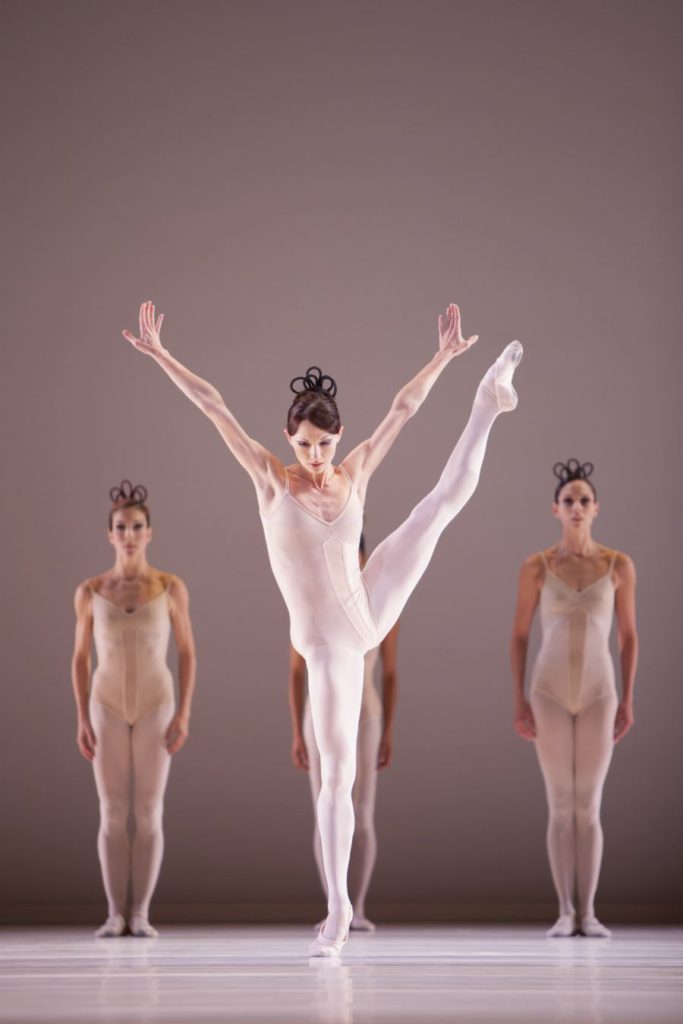
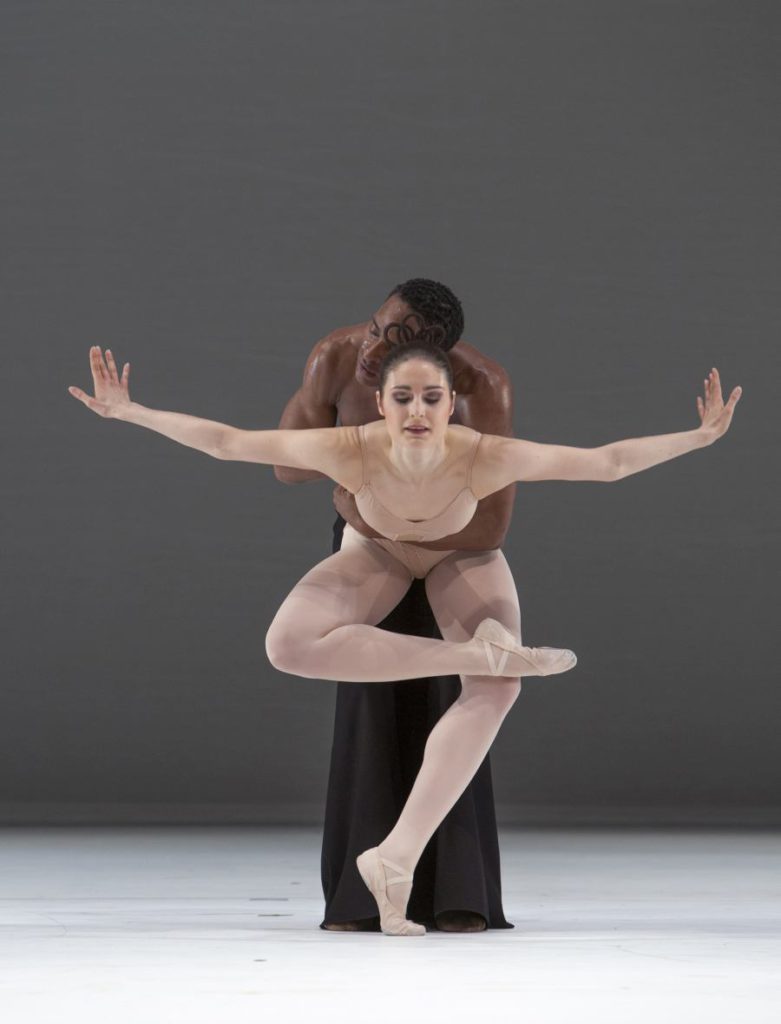 I always danced at home to the concerts on the radio – mainly on Sunday afternoons. In Holland, houses have two huge sliding doors which I opened when no one was at home and then I woud dance for hours – to the “still stehenden Sterne” [laughs] – between the doors, and these were live concerts, broadcast from the Concertgebouw – like Isadora Duncan dancing to Beethoven symphonies with much applause afterwards. I naturally took that, too. I always danced, thought about dance, and wanted to become a dancer.
I always danced at home to the concerts on the radio – mainly on Sunday afternoons. In Holland, houses have two huge sliding doors which I opened when no one was at home and then I woud dance for hours – to the “still stehenden Sterne” [laughs] – between the doors, and these were live concerts, broadcast from the Concertgebouw – like Isadora Duncan dancing to Beethoven symphonies with much applause afterwards. I naturally took that, too. I always danced, thought about dance, and wanted to become a dancer.
I was seven when the war broke out and twelve when it was over. By then I had almost no schooling; I had completed only four classes and didn’t want to go back to school after the war. My mother had a friend who worked for a makeup artist – 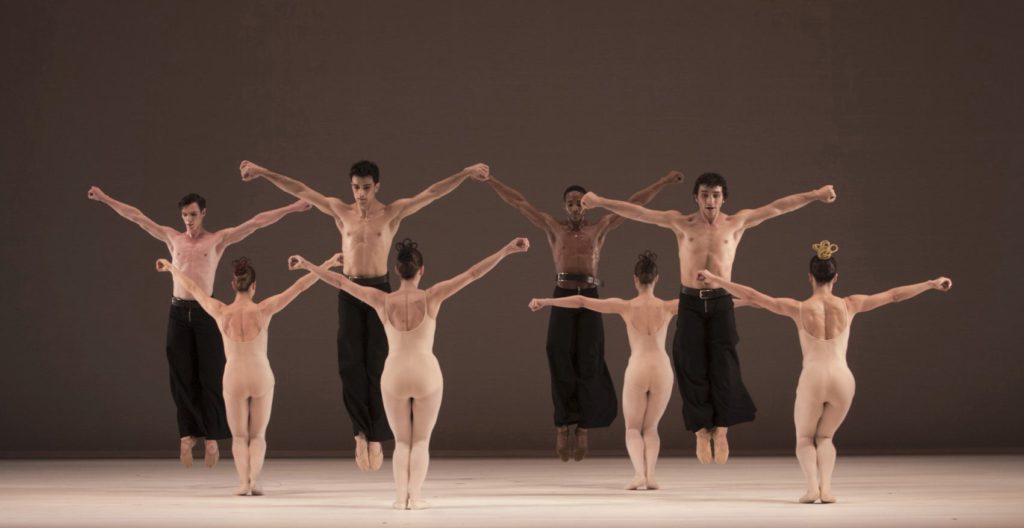 Herman Michels, a stupendous man – and I started to work for him when I was thirteen years old. I thought that by doing this I’d already be very close to the stage and could easily make the switch to dance. However, I had considerable success as a makeup artist. I won the Grand Prix of Holland at age sixteen.
Herman Michels, a stupendous man – and I started to work for him when I was thirteen years old. I thought that by doing this I’d already be very close to the stage and could easily make the switch to dance. However, I had considerable success as a makeup artist. I won the Grand Prix of Holland at age sixteen.
At age eighteen things changed when the ballerina Sonia Gaskell entered the scene. I was working as a makeup artist at a huge festival at Amsterdam’s Dam Square where Gaskell performed every day, and I met dance people there who intrigued me tremendously. I decided then I had to stop working as a makeup artist and thought, “Now or never!”
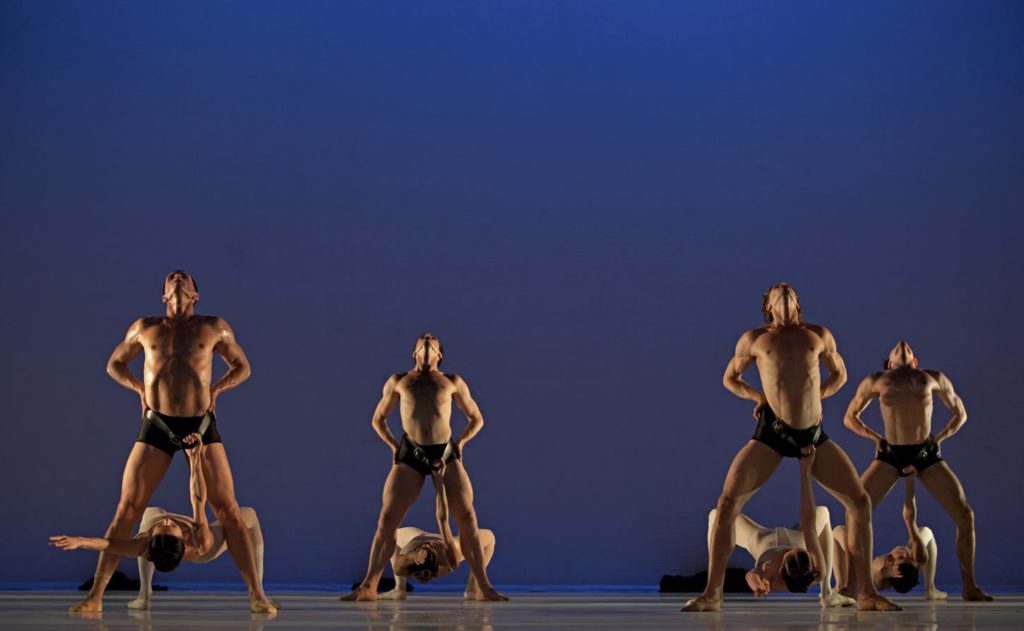 I told Michels that I wanted to quit to be a dancer. He answered, “I’ve always known that!” He was phenomenal. And he asked how I intended to make my living. I had no idea. “All right,” he proposed, “you’ll work one evening per week for me and you’ll get the same pay as before.” But that agreement lasted only three months, because in Holland’s dance schools there were no boys at all and they were happy to find a boy who wanted to dance. After those three months of training, I was onstage. Please don’t ask me how. I was never handsome but always tremendously clever. I studied the choreography and imitated it. Of course, I caused outcries of “The feet! The fingers!” My dancing looked terrible but I progressed quickly.
I told Michels that I wanted to quit to be a dancer. He answered, “I’ve always known that!” He was phenomenal. And he asked how I intended to make my living. I had no idea. “All right,” he proposed, “you’ll work one evening per week for me and you’ll get the same pay as before.” But that agreement lasted only three months, because in Holland’s dance schools there were no boys at all and they were happy to find a boy who wanted to dance. After those three months of training, I was onstage. Please don’t ask me how. I was never handsome but always tremendously clever. I studied the choreography and imitated it. Of course, I caused outcries of “The feet! The fingers!” My dancing looked terrible but I progressed quickly.
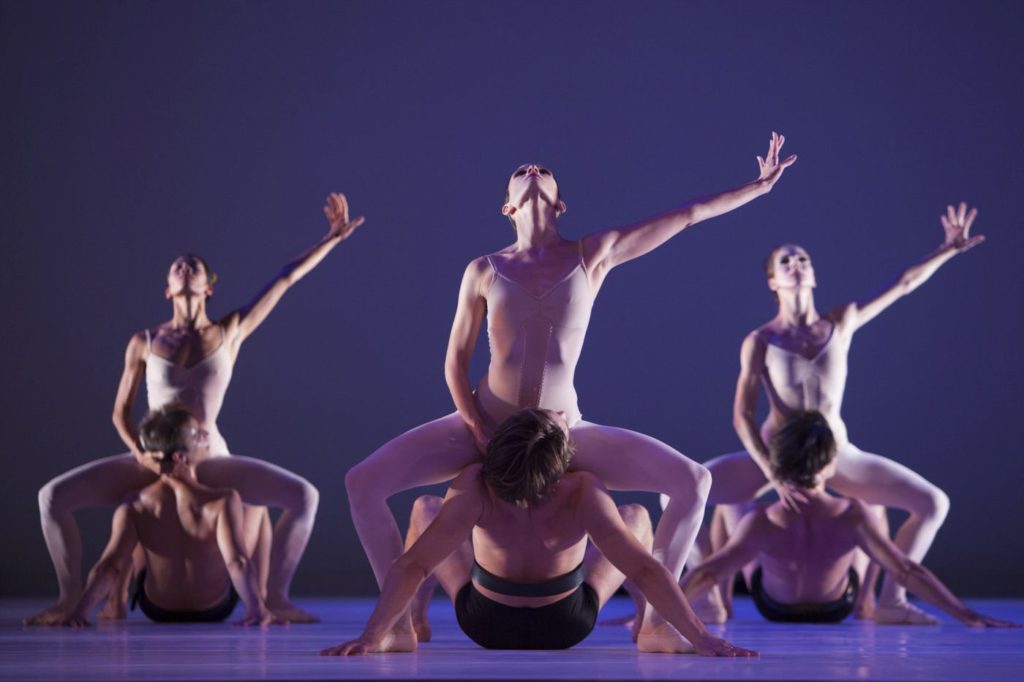 Koegler: But did you have no dance training at all? Eighteen years old is generally considered much too late to become a dancer. Was that the reason you were more interested in choreography? Or did you change your mind and decide it was better to become a choreographer?
Koegler: But did you have no dance training at all? Eighteen years old is generally considered much too late to become a dancer. Was that the reason you were more interested in choreography? Or did you change your mind and decide it was better to become a choreographer?
van Manen: Basically I always wanted to become a choreographer as well as a dancer. I also wanted to become a good dancer. After ten years I even managed to reach soloist status. I was quite pretentious and already knew my weaknesses. I was often told by Françoise Adret, director of Amsterdam’s Opera Ballet, or by ballet master Roland Casenave, that my butt was too big or stuck out, or that my feet turned 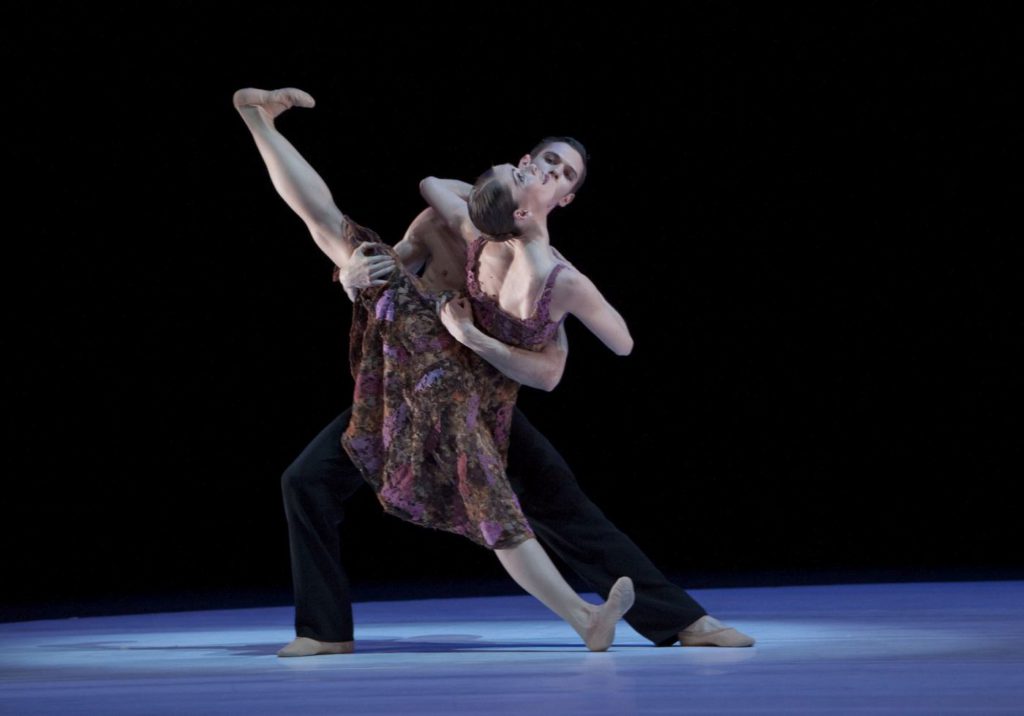 in, or my knees were bent. Where another dancer might have needed to see a psychiatrist in such situations I never did because I was stunningly good at turns. When I got very angry, I did a preparation and did – this was my talent – sixteen to twenty pirouettes. That was my way of answering back and I believe this always saved me from feeling down or depressed. It’s really true.
in, or my knees were bent. Where another dancer might have needed to see a psychiatrist in such situations I never did because I was stunningly good at turns. When I got very angry, I did a preparation and did – this was my talent – sixteen to twenty pirouettes. That was my way of answering back and I believe this always saved me from feeling down or depressed. It’s really true.
I had always talked about doing choreography and I began when Amsterdam had commissioned a new work from composer Lex van Delden, dancer/choreographer Jan Rebel, and set designer Hans van Norden. They all knew me pretty well and knew that I always wished to choreograph. They approached me, basically saying that I always had had a big mouth talking about choreographing. They actually told me that 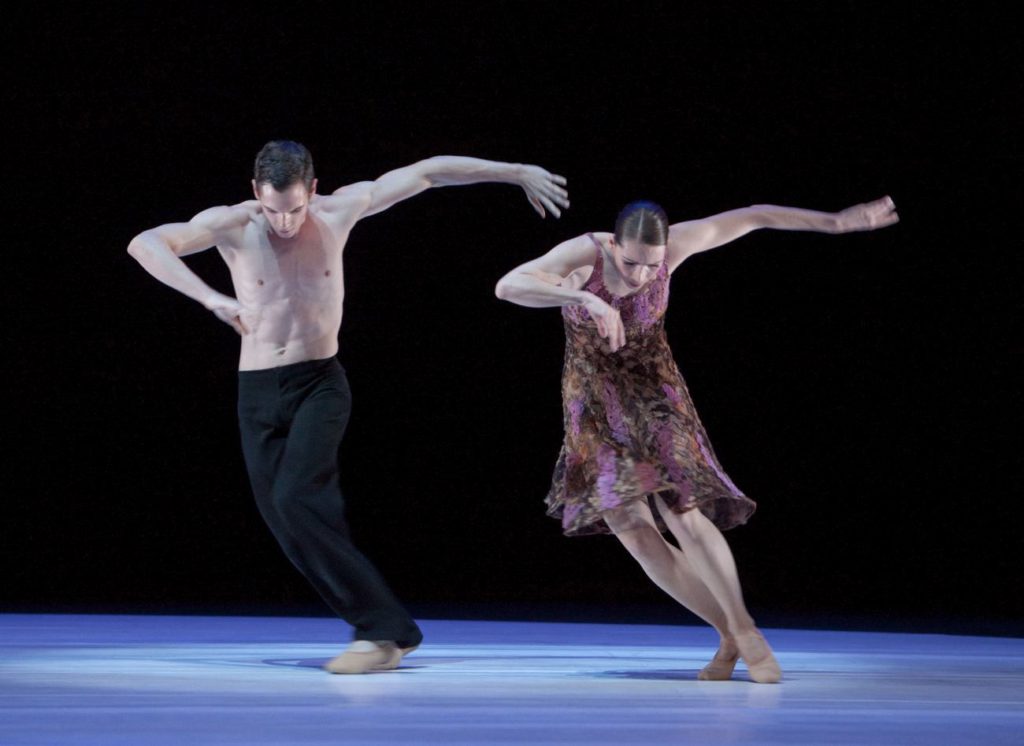 if I were able to present them with something within six weeks, I’d get the contract. Of course, the piece had to be based on a story.
if I were able to present them with something within six weeks, I’d get the contract. Of course, the piece had to be based on a story.
It had to be for twenty dancers, but I only managed to include nineteen. It had to last at least twenty minutes and I had to choose a Dutch composer as well as a Dutch set designer. You see, a very nationally tinged project. The ballet that I created for the Netherlands Opera, back then under the directorship of Françoise Adret, was a success. It premiered at December 19, 1957, and was performed 350 times.
Koegler: Did it have a Dutch topic as well? Were you asked to choreograph about cheese?
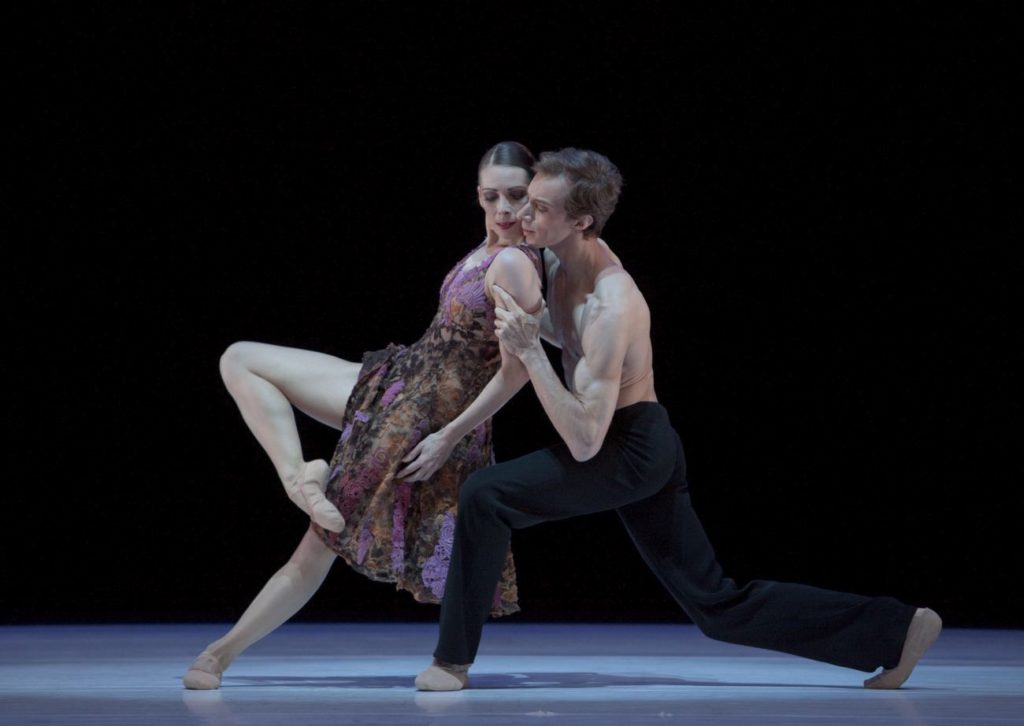 van Manen: I leave that to the Swiss [laughter, applause]. No, there was no specific Dutch topic. It slightly resembled West Side Story and I can show by the date of the premiere that I hadn’t yet seen West Side Story. But I was always very enthusiastic about Robbins, back then even more than about Balanchine. Today it’s Balanchine. Back then Roland Petit’s Ballet des Champs-Élysées influenced me, too. In fact, shortly after the war, France was a source of inspiration. Balanchine, as well as American Ballet Theatre, had already been in Holland. I had seen them all.
van Manen: I leave that to the Swiss [laughter, applause]. No, there was no specific Dutch topic. It slightly resembled West Side Story and I can show by the date of the premiere that I hadn’t yet seen West Side Story. But I was always very enthusiastic about Robbins, back then even more than about Balanchine. Today it’s Balanchine. Back then Roland Petit’s Ballet des Champs-Élysées influenced me, too. In fact, shortly after the war, France was a source of inspiration. Balanchine, as well as American Ballet Theatre, had already been in Holland. I had seen them all.
Koegler: In view of your actual practical knowledge and experience, do you think a choreographer categorically needs experience as a dancer? Should it be only classical training or are modern dance and other forms of dance also required?
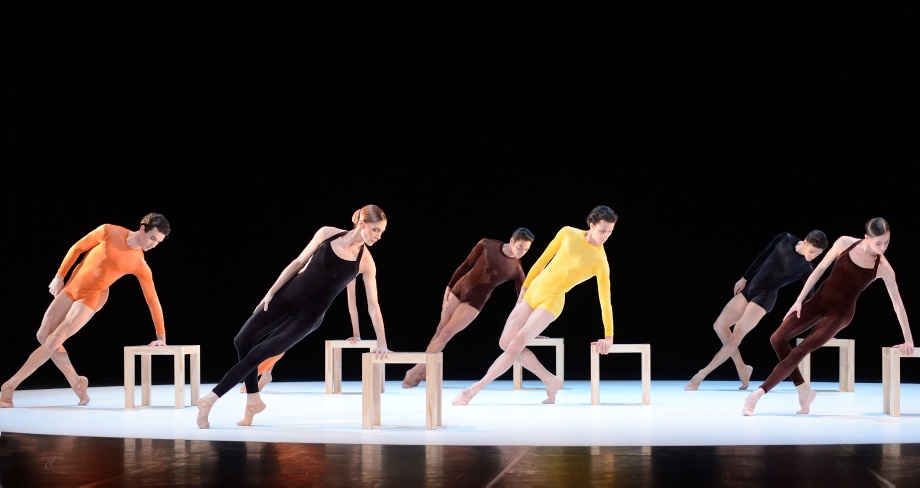 van Manen: I don’t believe you can become a good choreographer without having danced yourself. The whole business would be too theoretical in my opinion. It’s not necessary that you’ve been a fantastic dancer, but at least you should have the experience. You should know something about the body’s possibilities and what’s appreciated and what isn’t. What you love to do and what you hate. You also must have worked with choreographers, must have railed against them, and must have been terribly critical. I believe it has to be like this.
van Manen: I don’t believe you can become a good choreographer without having danced yourself. The whole business would be too theoretical in my opinion. It’s not necessary that you’ve been a fantastic dancer, but at least you should have the experience. You should know something about the body’s possibilities and what’s appreciated and what isn’t. What you love to do and what you hate. You also must have worked with choreographers, must have railed against them, and must have been terribly critical. I believe it has to be like this.
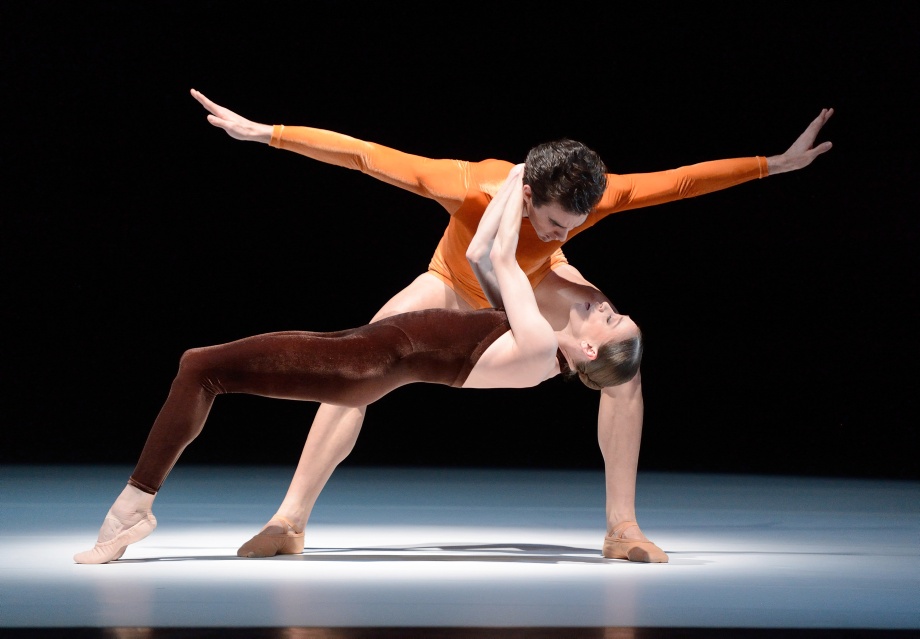 If one intends to become a choreographer one naturally is interested in many things. I always felt and invariably feel attracted to America. Maybe that’s due to my brother. He was a jazz pianist and actually I was always involved in American music. I was also keen on American movies. I watched all of them. Then, at the end of 1959 or in the early 1960s, I actually had classical training, but in fact, no real schooling. I simply started to dance and learned the discipline because and while I stood on the stage. I already knew a lot about jazz-like movement. I knew about pop and later also about rock. I recognized exactly whether something would swing or not. In my opinion, classical ballet or dance in general has to swing, too, otherwise it’s corny.
If one intends to become a choreographer one naturally is interested in many things. I always felt and invariably feel attracted to America. Maybe that’s due to my brother. He was a jazz pianist and actually I was always involved in American music. I was also keen on American movies. I watched all of them. Then, at the end of 1959 or in the early 1960s, I actually had classical training, but in fact, no real schooling. I simply started to dance and learned the discipline because and while I stood on the stage. I already knew a lot about jazz-like movement. I knew about pop and later also about rock. I recognized exactly whether something would swing or not. In my opinion, classical ballet or dance in general has to swing, too, otherwise it’s corny.
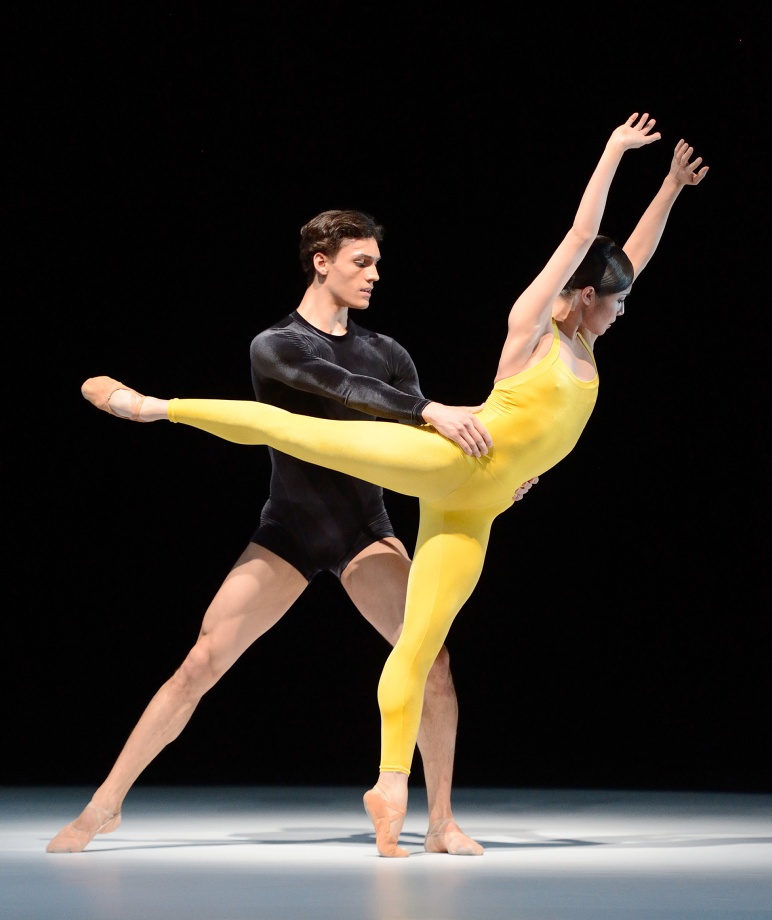 Regarding modern dance, Benjamin Harkarvy and I, of course, invited the Americans right away. I sat for hours – for years – watching them. In 1957 I saw Merce Cunningham and was most enthusiastic about Martha Graham, all of whose performances I attended. I was aware that her work was fabulous but I really didn’t know why. I only knew this by instinct. On her last day she taught an open class at the Theater Carré and for the first time, I came to know that there was a technique and that instantly fueled my interest. I wanted to learn it. Actually I got the most from John Butler and Glen Tetley. However I wasn’t interested in appearing modern, which is something I always despised.
Regarding modern dance, Benjamin Harkarvy and I, of course, invited the Americans right away. I sat for hours – for years – watching them. In 1957 I saw Merce Cunningham and was most enthusiastic about Martha Graham, all of whose performances I attended. I was aware that her work was fabulous but I really didn’t know why. I only knew this by instinct. On her last day she taught an open class at the Theater Carré and for the first time, I came to know that there was a technique and that instantly fueled my interest. I wanted to learn it. Actually I got the most from John Butler and Glen Tetley. However I wasn’t interested in appearing modern, which is something I always despised.
Koegler: What motivates you to tackle a new ballet? Are there also special constraints?
van Manen: Of course it correlates with what one sees and experiences, but my starting point is usually the music. For me the music is the beginning. I never in my life had any instruction in music, and I think it may be why I may have a chip on my shoulder. I also believe that could be the reason why I chose so many masterpieces. That’s really true. Of course I have my own opinions about visual aspects, which are connected with other topics as well, with artistic philosophies.
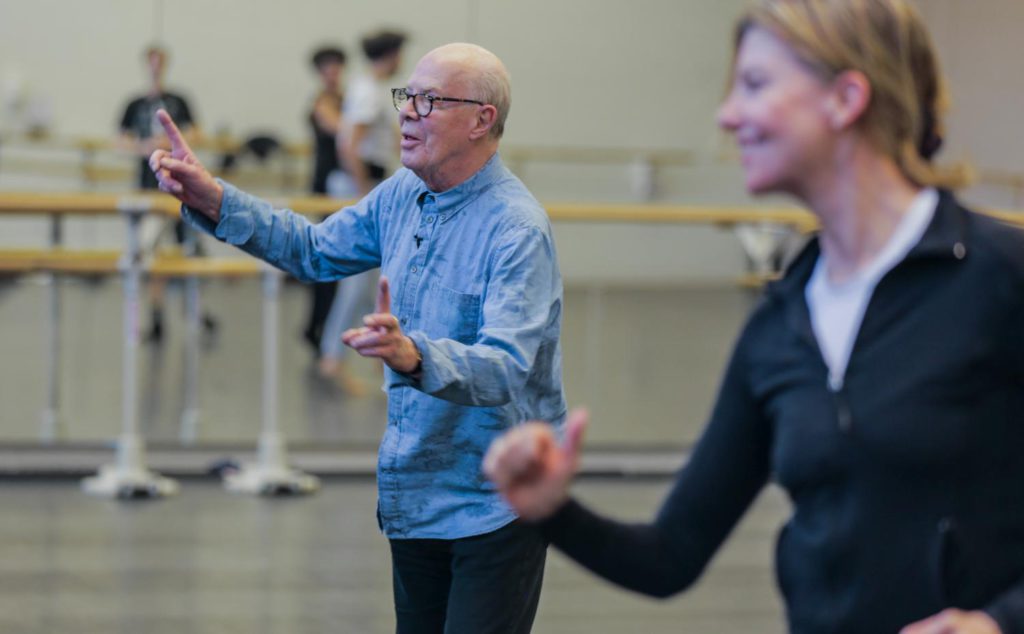 Koegler: Isn’t there also a challenge to create something for certain people, and that becomes the starting point? You would create a different ballet if you had only three dancers compared to a work for the corps de ballet. But isn’t it also the result of your company’s repertory policy? That your director approaches you and says, “We need an opening ballet,” or “We need a closing ballet,” or “These and those dancers haven’t been used for some time, could you create something for them?”
Koegler: Isn’t there also a challenge to create something for certain people, and that becomes the starting point? You would create a different ballet if you had only three dancers compared to a work for the corps de ballet. But isn’t it also the result of your company’s repertory policy? That your director approaches you and says, “We need an opening ballet,” or “We need a closing ballet,” or “These and those dancers haven’t been used for some time, could you create something for them?”
van Manen: Yes, but that’s not something I have to be told. I already do that because I’m aware of it. I was director for ten years. You signed the dancers’ contracts. If additionally you are a choreographer, one cannot think like a guest choreographer. That is the same as arranging a dinner party for some people versus being a guest at your own dinner party.
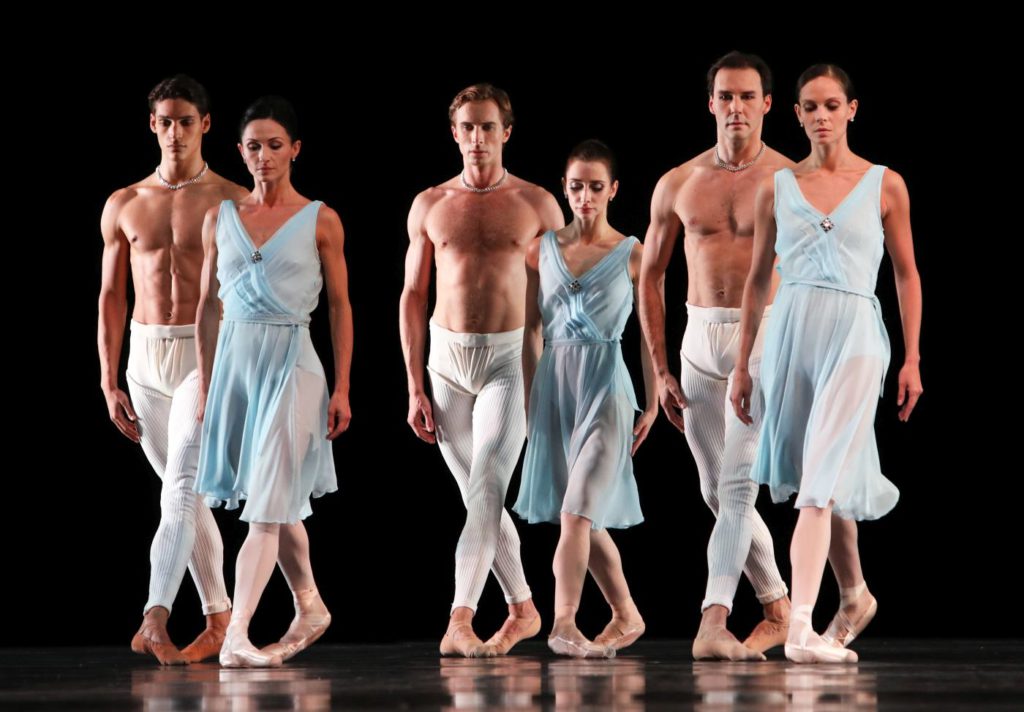 When Butler or Tetley or Anna Sokolow came to us in order to create a dance, naturally people are egoistic. They have to be like that. Needless to say, various dancers were left out. Then I had also to make a ballet and it was impossible to say, “I won’t take them.” Of course I took them. One learns tremendously from such situations. It sustains one, gives one strength, and one learns that not necessarily the best people are needed to create good ballets.
When Butler or Tetley or Anna Sokolow came to us in order to create a dance, naturally people are egoistic. They have to be like that. Needless to say, various dancers were left out. Then I had also to make a ballet and it was impossible to say, “I won’t take them.” Of course I took them. One learns tremendously from such situations. It sustains one, gives one strength, and one learns that not necessarily the best people are needed to create good ballets.
Sometimes one has to do special things that coincide with things being simultaneously in one’s mind. It’s called rencontre. It’s exactly the same when someone in America has an idea and someone in Amsterdam has the identical idea at the same moment. It’s what happened with Adagio Hammerklavier. I was busy with adagios; something I wanted to do at that time. I remember that I heard an adagio by Mahler, which I considered slightly too heavy. That wasn’t the adagio I wanted to take.
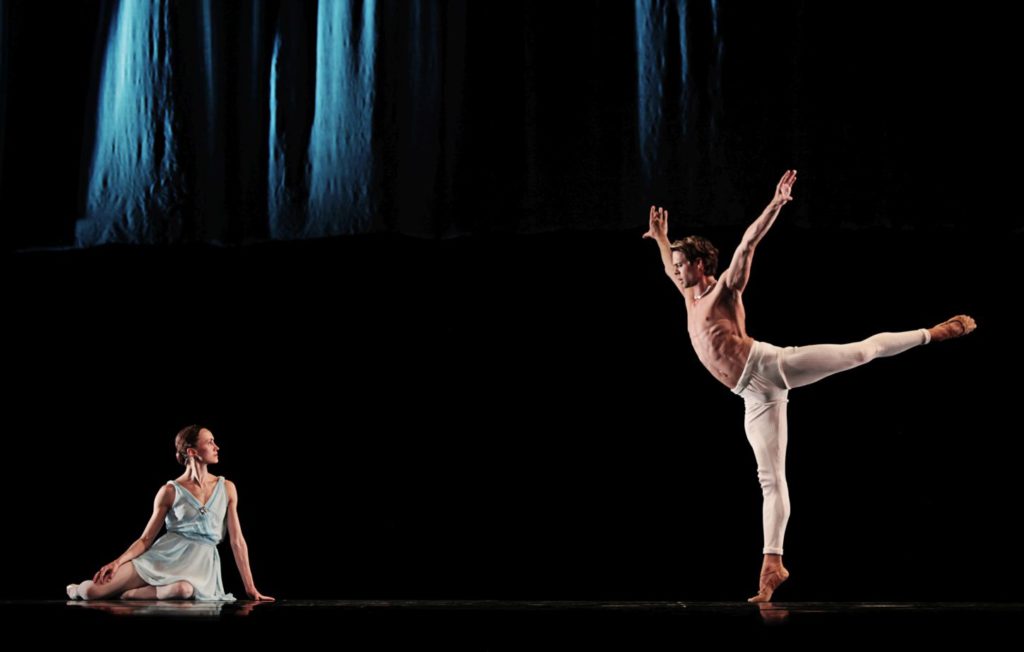 Unexpectedly, Rudi van Dantzig approached me and said, “Maybe you can create a ballet for our six soloists, because we are setting Swan Lake and will need plenty of time for the corps de ballet. “While we rehearse the corps, can you work with the six soloists?” I thought. “Wow. That’s fantastic. With six soloists I can perfectly work on an adagio, because adagios are very difficult, and it’s all the more difficult if one has to create it for twenty girls. For six soloists, however, that’s easier.”
Unexpectedly, Rudi van Dantzig approached me and said, “Maybe you can create a ballet for our six soloists, because we are setting Swan Lake and will need plenty of time for the corps de ballet. “While we rehearse the corps, can you work with the six soloists?” I thought. “Wow. That’s fantastic. With six soloists I can perfectly work on an adagio, because adagios are very difficult, and it’s all the more difficult if one has to create it for twenty girls. For six soloists, however, that’s easier.”
At the same time a young German friend of mine was visiting Holland and came with a huge pile of records including the Hammerklavier. I had never heard anything like it and asked, “What’s that?” “That’s the Hammerklavier Sonata played by 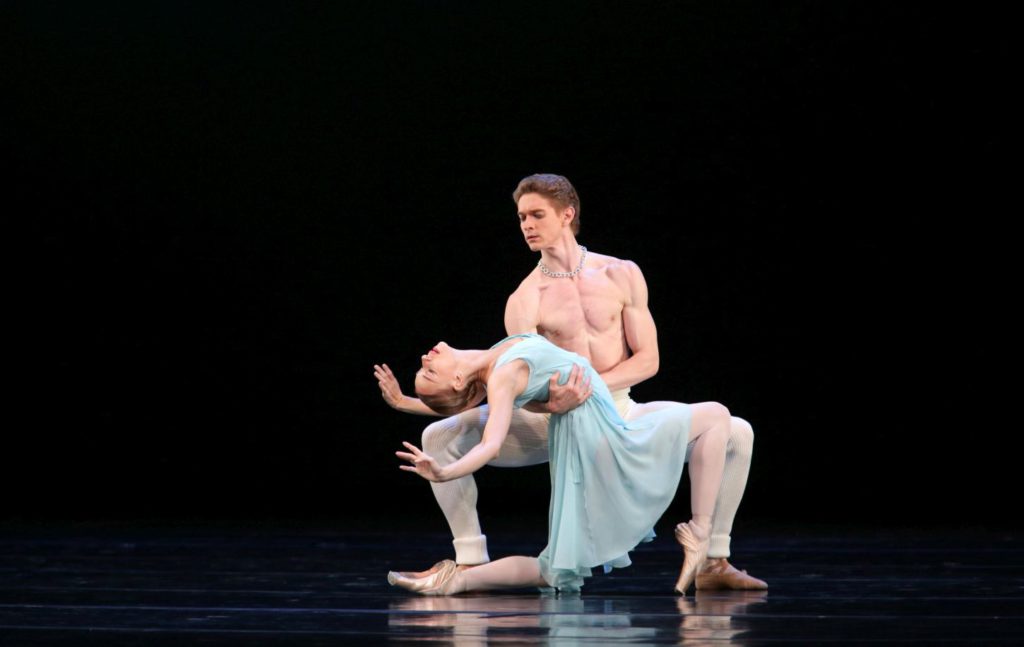 Christopher Eschenbach.” I said, “Eschenbach, who’s Eschenbach?” [laughter] When someone is fanatical about something, and this boy certainly was, I usually get respectful. And I’m convinced he or she has to know it [laughter].
Christopher Eschenbach.” I said, “Eschenbach, who’s Eschenbach?” [laughter] When someone is fanatical about something, and this boy certainly was, I usually get respectful. And I’m convinced he or she has to know it [laughter].
At this time I had already done the Grosse Fuge. Manfred Gräter, head of “Dance and Music” of Cologne’s WDR 3 Television, had brought Beethoven’s music to my attention. Back then I felt how incredibly fantastic Beethoven is and that one needs a great amount of courage to finally choose him. So I thought, I already mastered it once and took the Hammerklavier Sonata, the version played by Eschenbach. I thought it was a superb recording and it’s played slowly enough to be definitively an adagio. When I finally worked in the studio I realized that I indeed immersed myself in adagio and not only because the music was called an “adagio.”
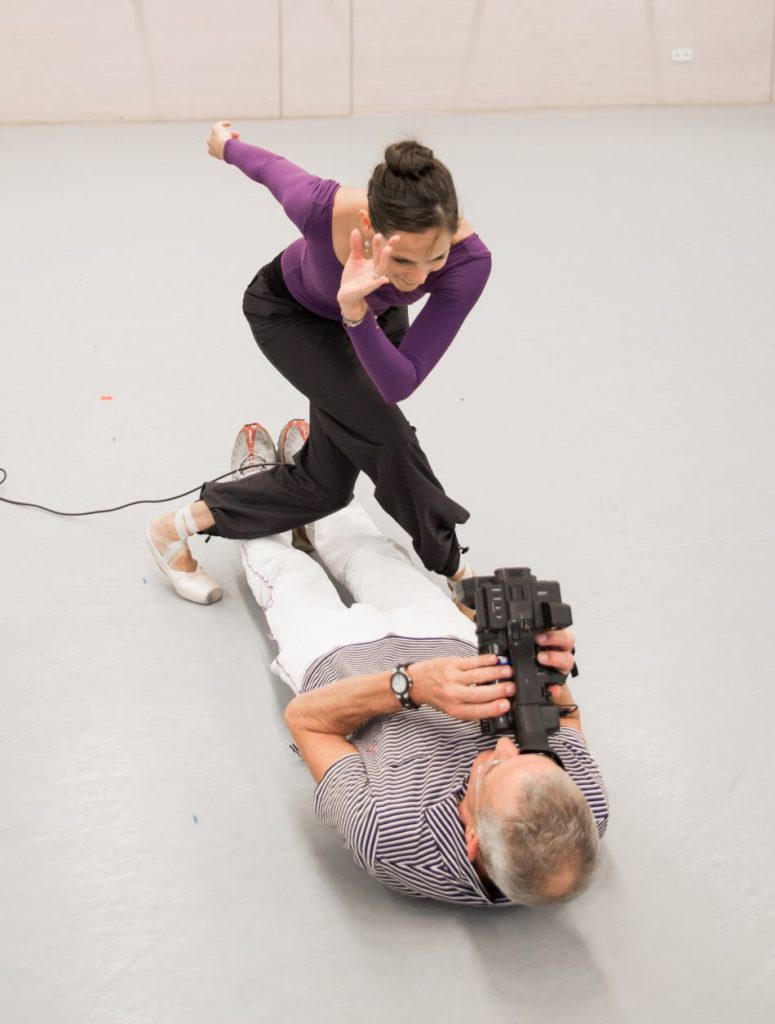 Koegler: And now we are up to your waltz period? Or are you already right in the middle of it?
Koegler: And now we are up to your waltz period? Or are you already right in the middle of it?
van Manen: I already finished it. I choreographed a waltz for Die Fledermaus. They had asked me, and I had wanted to create a ballet for an operetta anyway. It’s again an instance of rencontre. Such coincidences happen regularly to me. Maybe I should thank heaven, though I don’t believe in such things. I had heard a recording with four waltzes by Strauss, transcriptions by Webern, Schoenberg, and Berg. I thought, well, let’s take those waltzes, then no one can accuse me of becoming old-fashioned, because, after all, I chose transcriptions by Schoenberg, who’s after all not the first or best one. I asked at the Opera and they liked my idea. I planned to use it in the second act, which takes place in a salon, and the music has a bit of a salon-like atmosphere.
How do such ideas arise? The troupe was touring and I had the opportunity to work with three soloists – three very good soloists. I also had in mind that the waltzes had been composed for seven instruments: piano, harmonica, clarinet, and 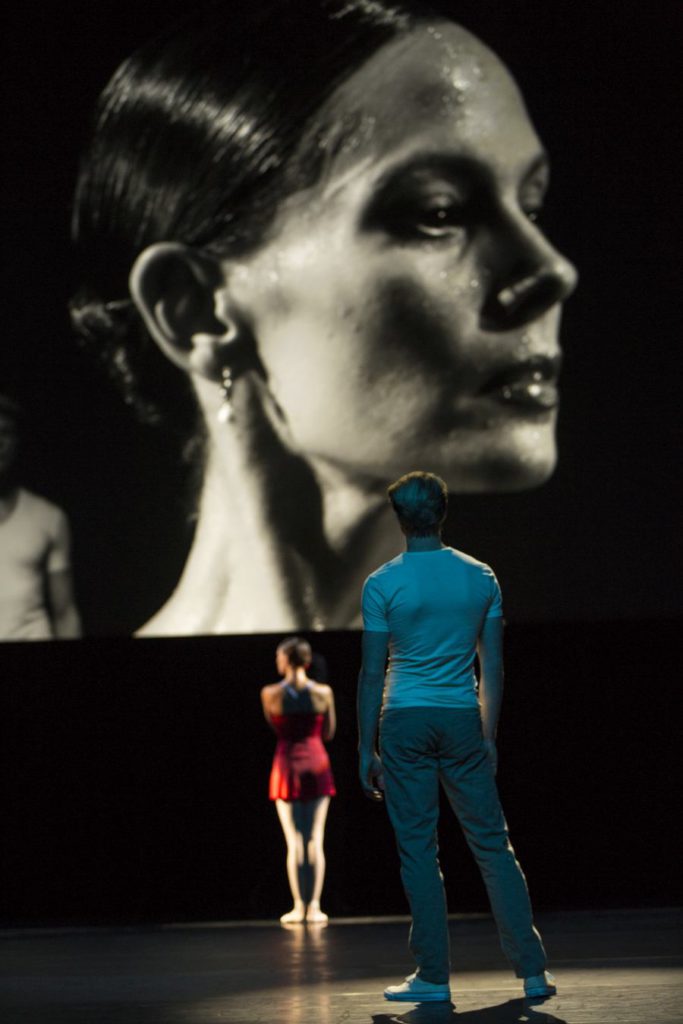
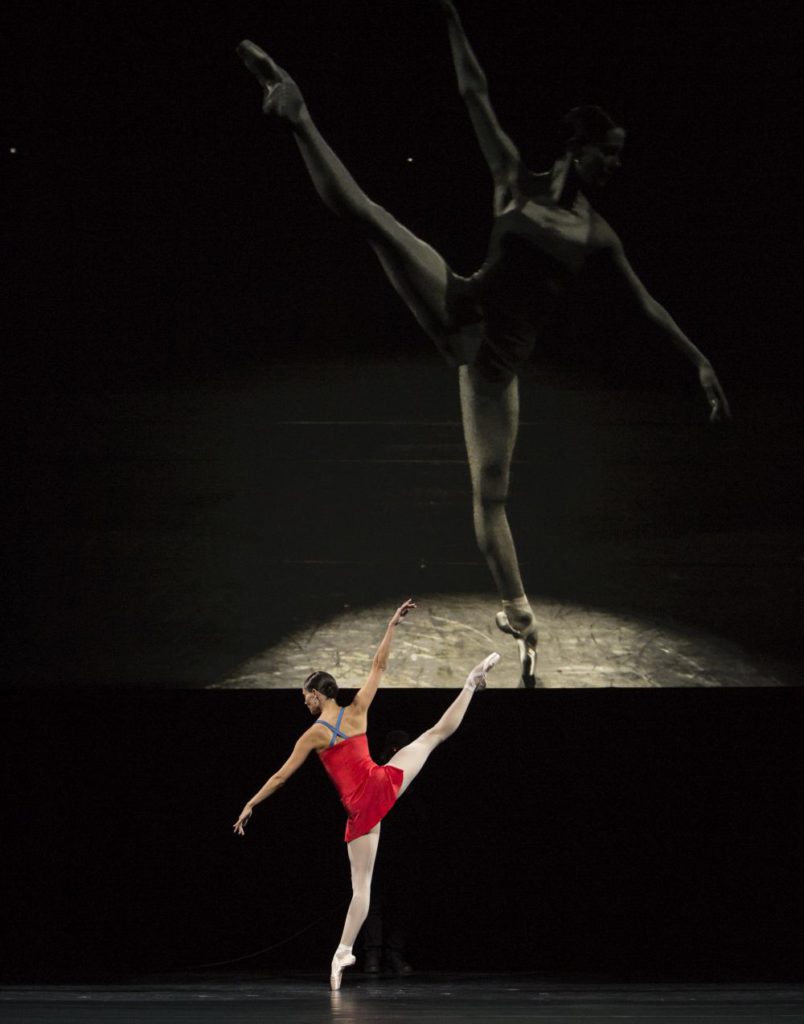 strings, which is an unusual combination. It became the second act’s opening and was very successful. The production had a huge decor; all opera decors are gigantic these days. But I switched off all the light. I was very happy about that.
strings, which is an unusual combination. It became the second act’s opening and was very successful. The production had a huge decor; all opera decors are gigantic these days. But I switched off all the light. I was very happy about that.
Die Fledermaus won’t be performed anymore. What a pity. Rudi van Dantzig really wanted to keep the waltz in the repertory, so I decided to add a second waltz and chose the Schatz-Walzer, orchestrated by Webern. The dance is for twelve girls and the combination of both waltzes will premiere soon. That’s the way ballets emerge.
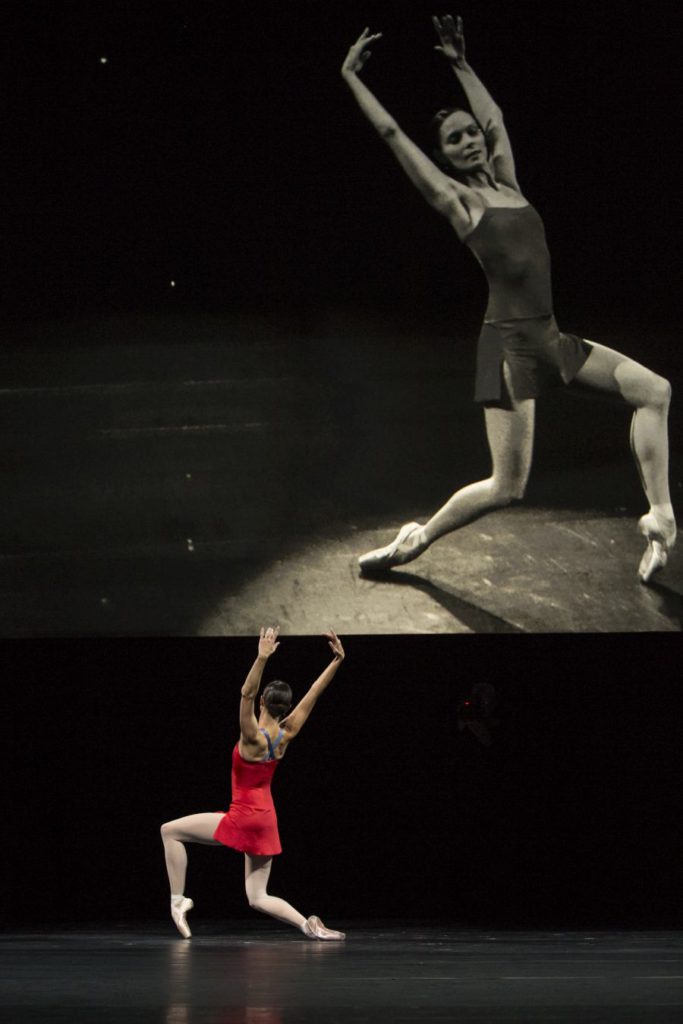
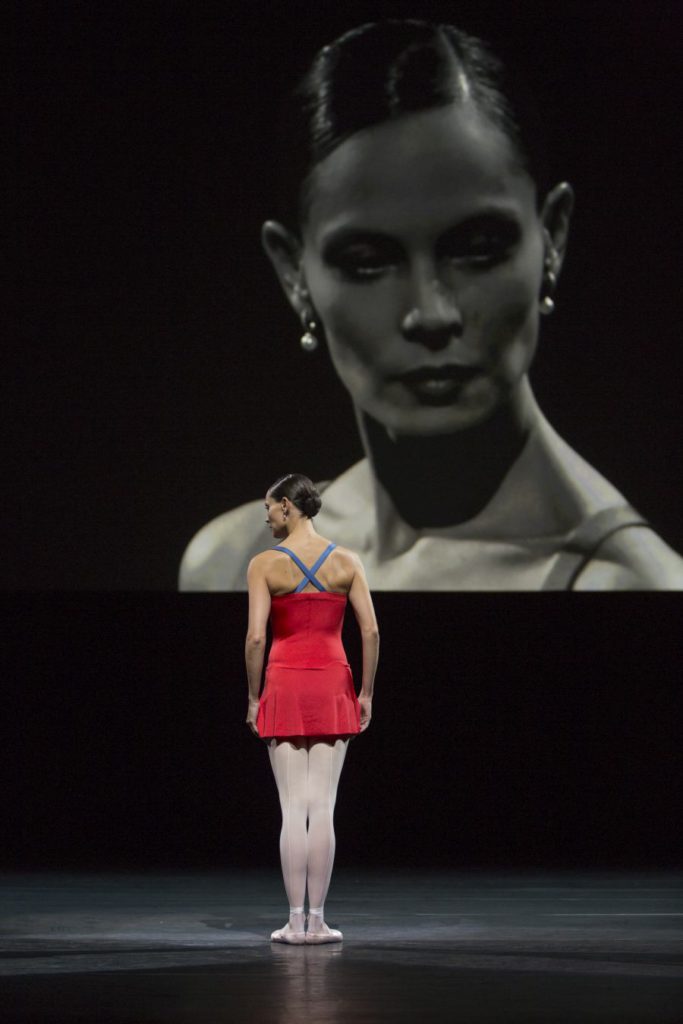 Rudi is one of those people who always says, “Yes.” With him I found a fantastic director. It’s perfect. It is phenomenal when I ask something and unvaryingly get the answer, “Yes.” That makes one feel an immense sense of responsibility. If someone says “Yes” to me, how apprehensive I become by thinking, “Good God, I’ll never be able to live up to so many ‘Yeses.’” One gets very respectful toward such people.
Rudi is one of those people who always says, “Yes.” With him I found a fantastic director. It’s perfect. It is phenomenal when I ask something and unvaryingly get the answer, “Yes.” That makes one feel an immense sense of responsibility. If someone says “Yes” to me, how apprehensive I become by thinking, “Good God, I’ll never be able to live up to so many ‘Yeses.’” One gets very respectful toward such people.
Koegler: When remembering the last ballets I saw from you, Live at the Theater Carré, the huge former circus grounds in Amsterdam, I recall an event made of contrasts. It took place out there on the platform and involved only one ballerina and a TV camera.
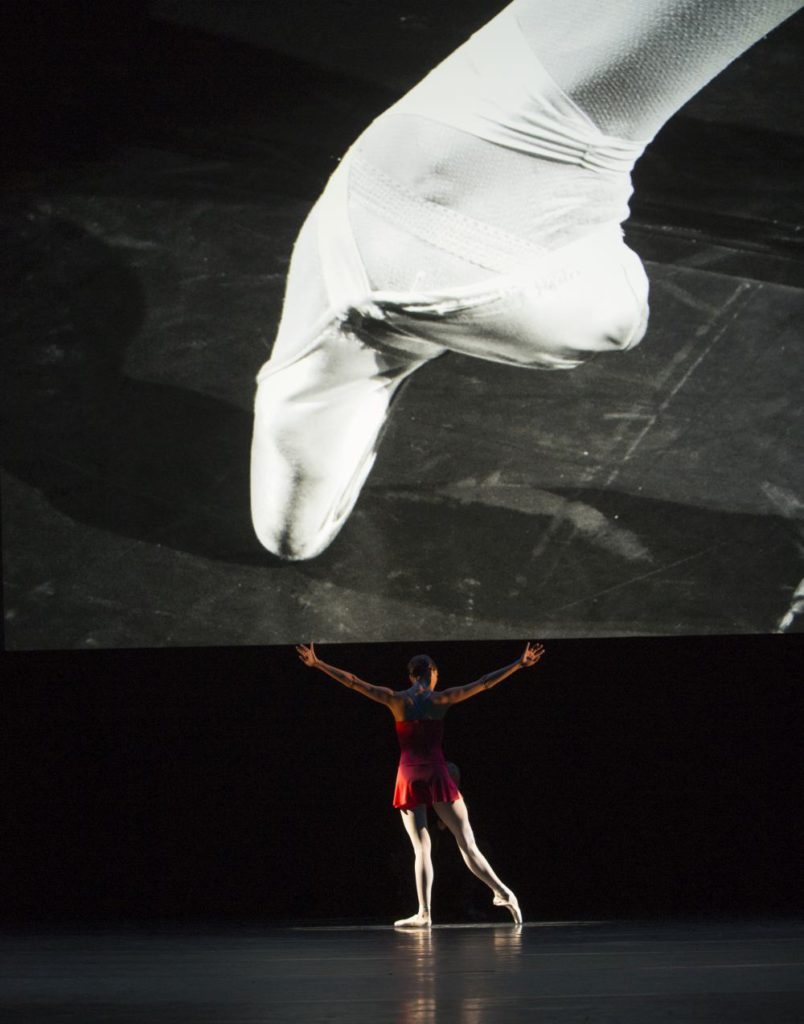
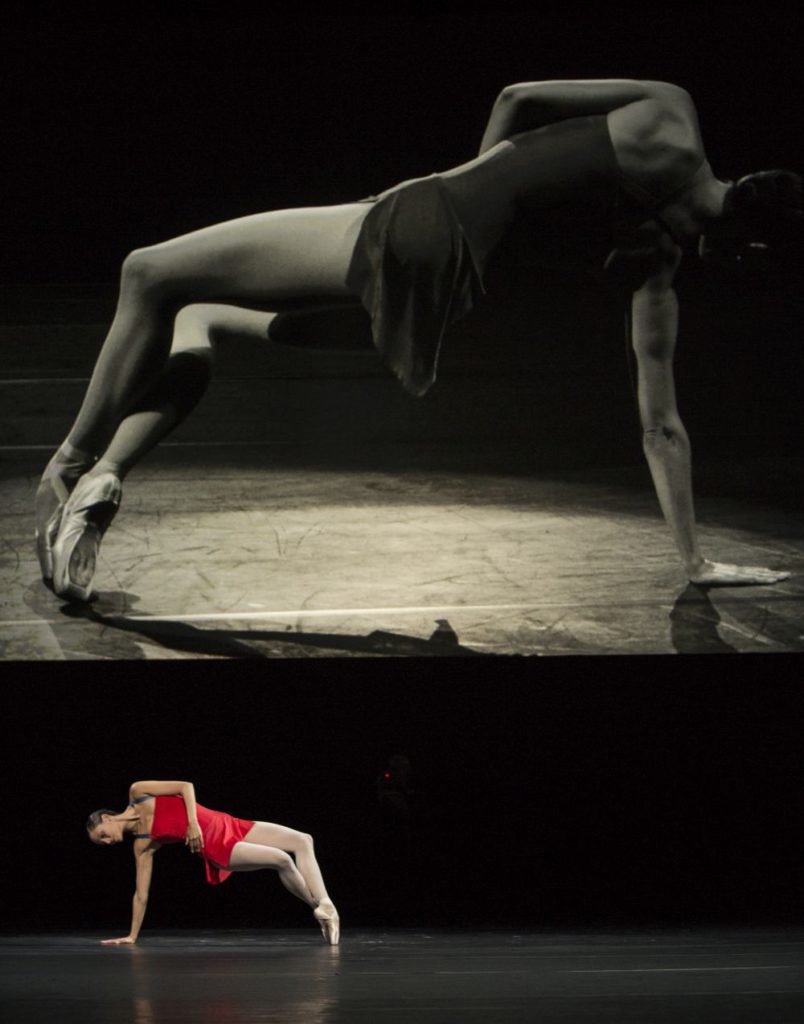 van Manen: I’ve always been very busy with video. No one knows that better than you. You wrote about it in the 1972 Ballet Yearbook. Then the idea for an event in the Carré came up and I thought that would be the opportunity to finally integrate the camera [with the dance], because there was a runway and a stage. I was able to shield the stage with a screen and put a cameraman – our video master Henk van Dijk – and the girl into the circus ring, and one could watch her on the screen. In 1970 I had tried that in the ballet Twice. Back then I wanted to use an Eidophor, which is a video projector that takes a live feed from a camera and projects it instantaneously. But it was too expensive – the equivalent to 3000 German marks for the evening.
van Manen: I’ve always been very busy with video. No one knows that better than you. You wrote about it in the 1972 Ballet Yearbook. Then the idea for an event in the Carré came up and I thought that would be the opportunity to finally integrate the camera [with the dance], because there was a runway and a stage. I was able to shield the stage with a screen and put a cameraman – our video master Henk van Dijk – and the girl into the circus ring, and one could watch her on the screen. In 1970 I had tried that in the ballet Twice. Back then I wanted to use an Eidophor, which is a video projector that takes a live feed from a camera and projects it instantaneously. But it was too expensive – the equivalent to 3000 German marks for the evening.
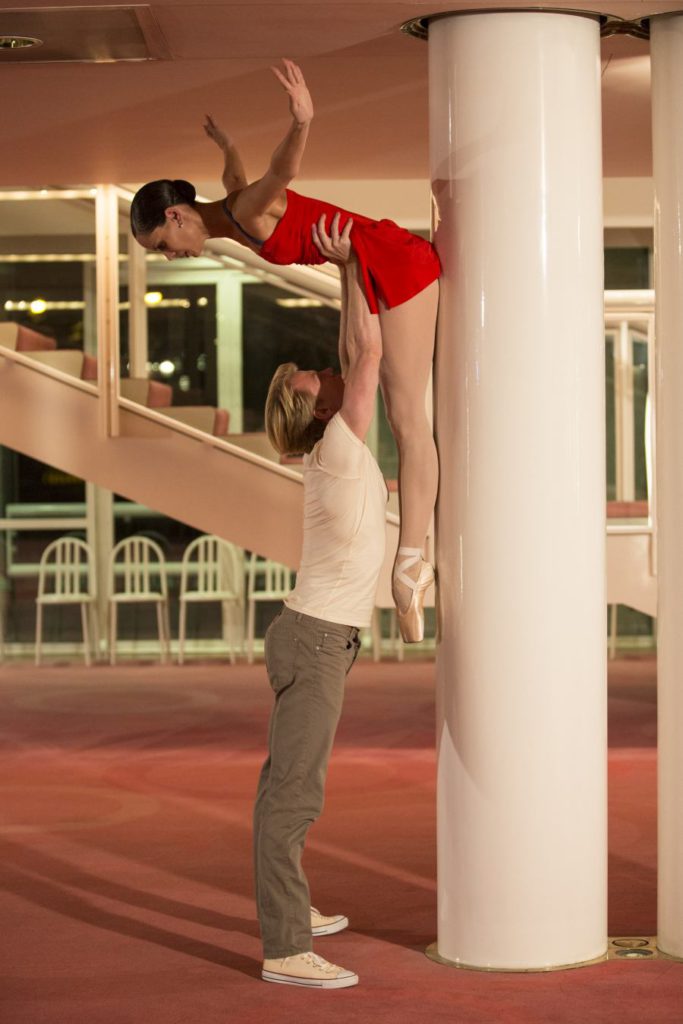
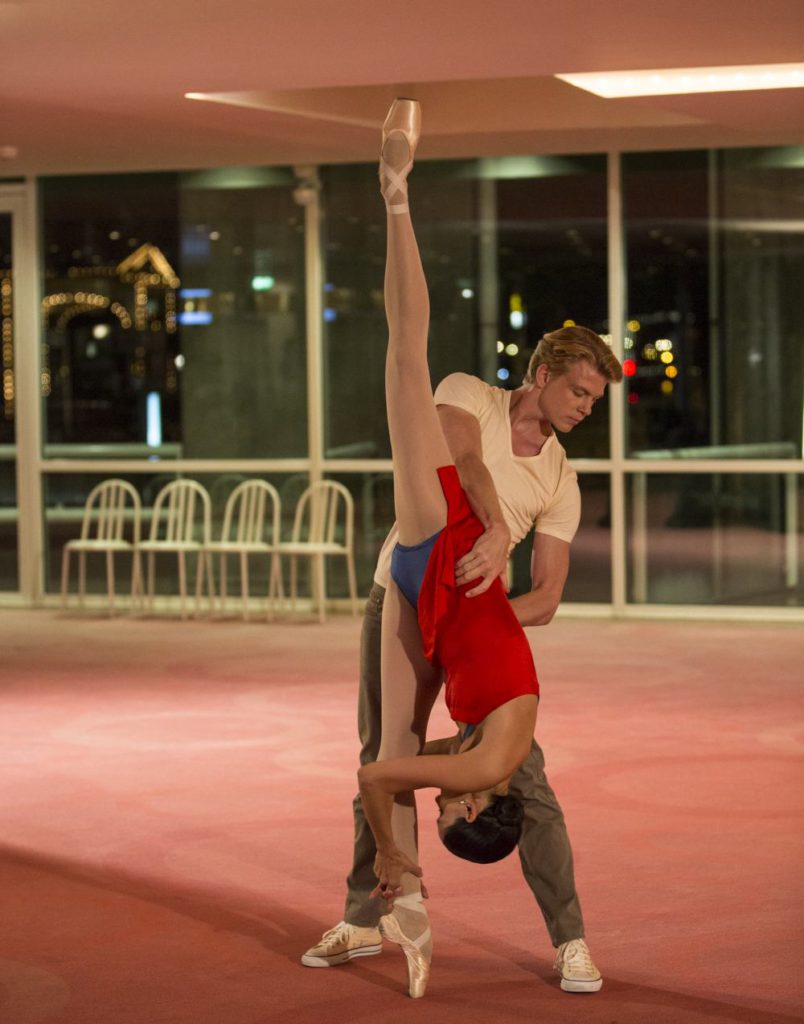 But when I knew that we would perform at the Carré, I decided finally to try for an Eidophor. I was convinced it would be cheaper and indeed it was. I wanted to see the dancers’ faces enlarged and below, live, their bodies. It should be like having two seats in the auditorium, one in the back and one in the first balcony. That’s the whole idea, if video is used like this. It’s unbelievable what effects are accomplished by film. One can sit in one place and nonetheless be present everywhere. So one can identify with everything. That’s what I tried to explore with Live.
But when I knew that we would perform at the Carré, I decided finally to try for an Eidophor. I was convinced it would be cheaper and indeed it was. I wanted to see the dancers’ faces enlarged and below, live, their bodies. It should be like having two seats in the auditorium, one in the back and one in the first balcony. That’s the whole idea, if video is used like this. It’s unbelievable what effects are accomplished by film. One can sit in one place and nonetheless be present everywhere. So one can identify with everything. That’s what I tried to explore with Live.
Later I choreographed for only one head, one hand, and one foot. One could watch those parts of the body enlarged to five to eight meters, which really makes a difference. One can see the dancers in total view from a seat in the audience and simultaneously can point a microscope at their faces. It’s always nice to be a little bit like the German newspaper Bild (Picture), if you understand what I mean – to be allowed to be so immodest and come very close to the face. I was always highly fascinated by close-ups. And back then I had a reason to create a ballet that was not only about the total view but also about the close-up.
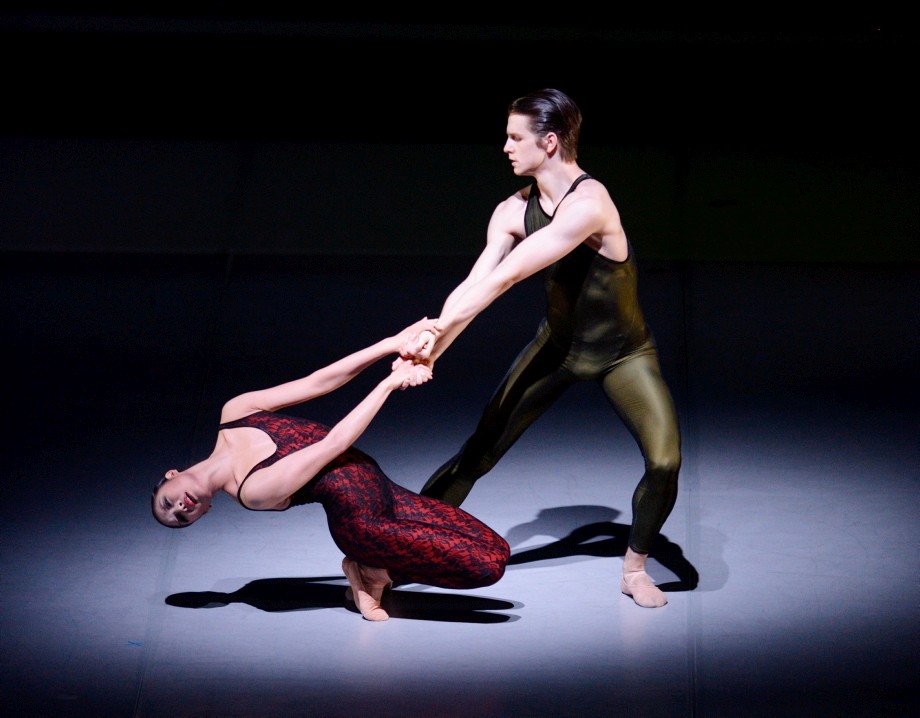
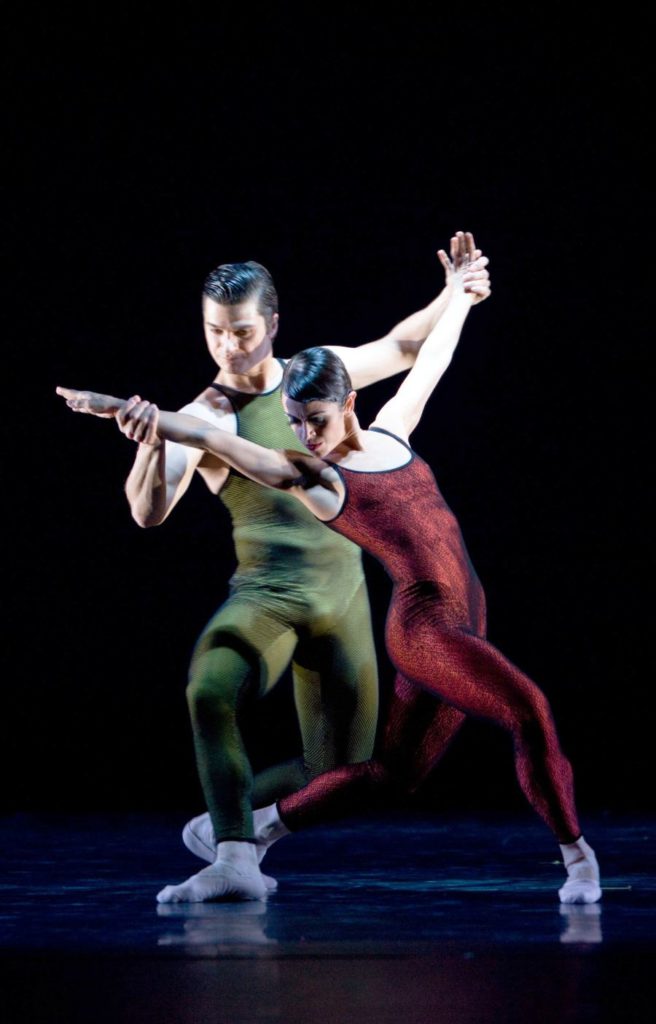 It was possible, moreover that the ballerina, followed by the camera, would leave the stage. The circus ring was empty but the image stayed. The plot was constructed accordingly. The ballerina left because she had a relationship with a boy who entered the ring. But afterwards he abandoned her. However, she was emancipated enough to follow him. That was why she left. Both met in the foyer, in the line at the box office. Isn’t that awesome for the audience, who had just walked through the same foyer and knew the surroundings? They were able to instantly interpret the scene.
It was possible, moreover that the ballerina, followed by the camera, would leave the stage. The circus ring was empty but the image stayed. The plot was constructed accordingly. The ballerina left because she had a relationship with a boy who entered the ring. But afterwards he abandoned her. However, she was emancipated enough to follow him. That was why she left. Both met in the foyer, in the line at the box office. Isn’t that awesome for the audience, who had just walked through the same foyer and knew the surroundings? They were able to instantly interpret the scene.
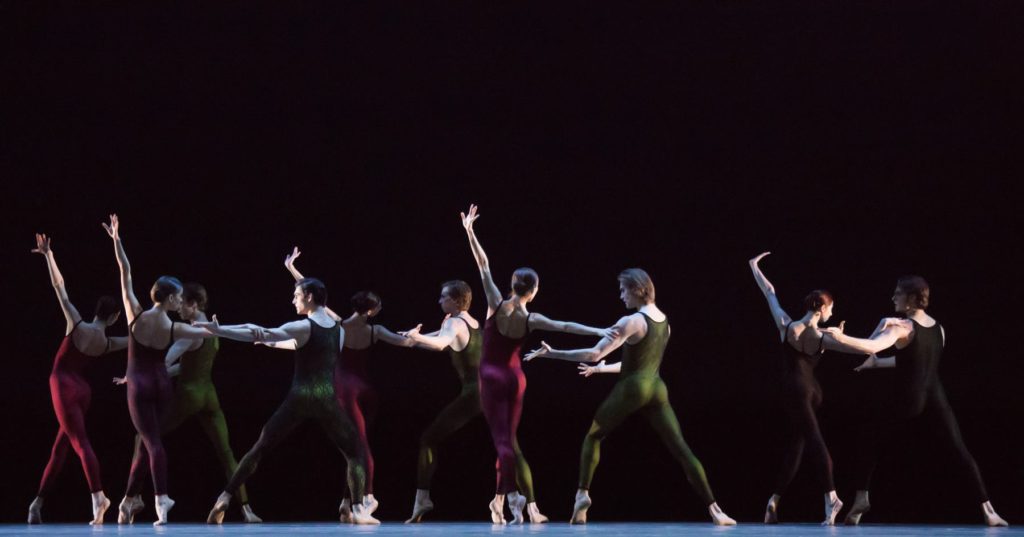 By chance the piece was successful. I am quite glad about that. Everyone says what a pity it is that it isn’t performed elsewhere as well. I was asked repeatedly if I could rearrange it for another theater. I don’t want that. If I were a painter and I had made a painting, directly on a wall, that became a success, it wouldn’t be possible to display it elsewhere either, because one couldn’t move it. That’s why I don’t deem it necessary to revive the piece. [Later van Manen changed his mind, and Live was revived by Dutch National Ballet in 2015.]
By chance the piece was successful. I am quite glad about that. Everyone says what a pity it is that it isn’t performed elsewhere as well. I was asked repeatedly if I could rearrange it for another theater. I don’t want that. If I were a painter and I had made a painting, directly on a wall, that became a success, it wouldn’t be possible to display it elsewhere either, because one couldn’t move it. That’s why I don’t deem it necessary to revive the piece. [Later van Manen changed his mind, and Live was revived by Dutch National Ballet in 2015.]
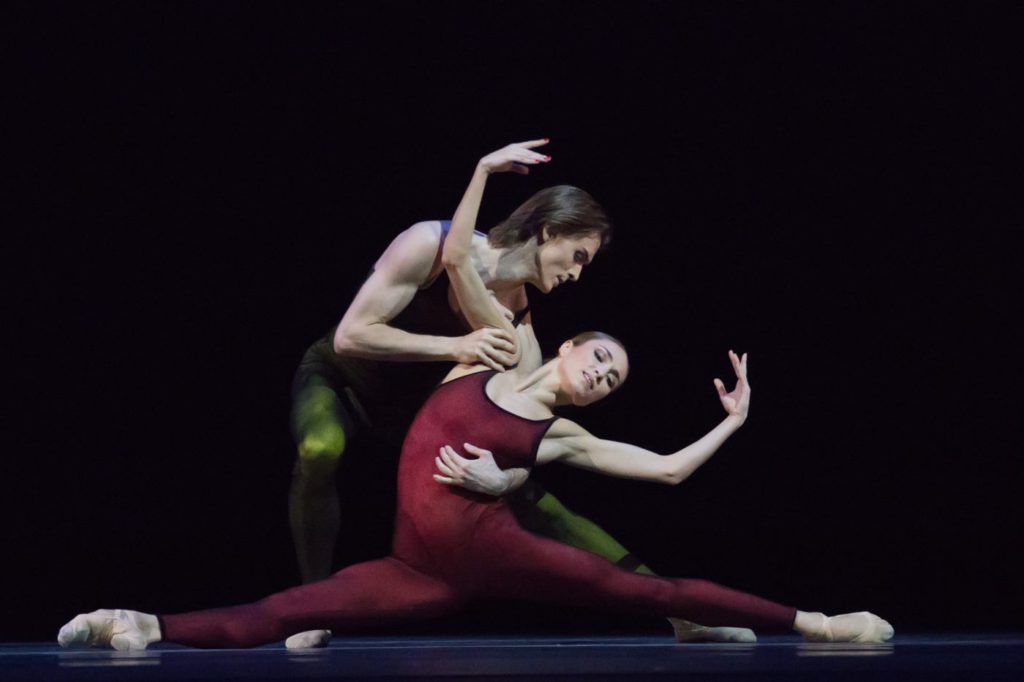 Koegler: Again and again music inspires your new ballets. Can you imagine creating a ballet without music? Actually there are some already.
Koegler: Again and again music inspires your new ballets. Can you imagine creating a ballet without music? Actually there are some already.
van Manen: I tried with Essay in Silence. Doing it once was enough. Then you know how it works and you’re satisfied. Certainly it’s a quite modern affair to start without music and later proceed with the music, and that’s what I did.
Koegler: That constituted a whole phase for the company.
van Manen: Yes, a whole period. When a piece starts in silence the audience knows it is serious [laughs]. Of course that wasn’t the intention. But if you repeat this you know from a certain moment on – at least I know – that it is time to stop unless there’s a reason. Various reasons. The music is too short and you want to extend the ballet, or . . . . [laughter].
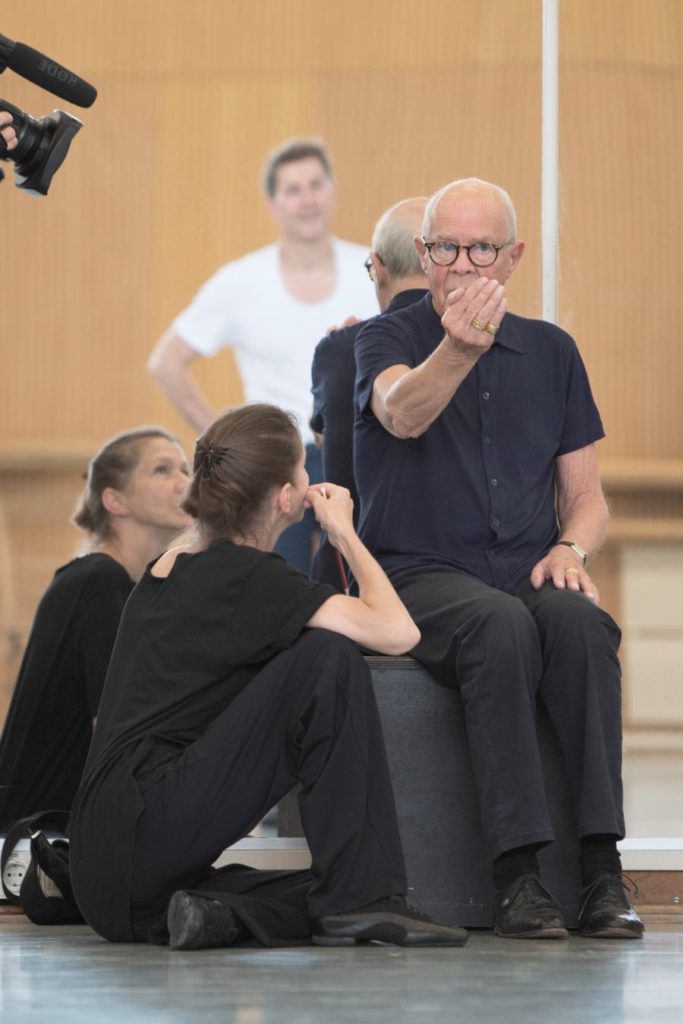 Koegler: You also choreographed ballets in which the music stops.
Koegler: You also choreographed ballets in which the music stops.
van Manen: Yes, for example in Five Sketches. There are five variations and I created a pas de deux. It must have been during the dance theater time, in 1965 or 1966. I thought that if I string together the five variations, people will be drawn into it and it becomes something like a fairytale.
It’s very important in choreography – and that’s what I always take into account – to let the individuals behind the dancers be seen. Dancers shouldn’t become sylphs. They only have to be sylphides when dancing that role, but not when they are not. They have to stay human, with human blood in their veins. After the fourth movement I stopped and the ballerina walks into the set and makes a terrible noise. She comes back, sits on the man’s shoulder, and then the two continue dancing.
“That’s too bad,” I was told many times, and I would say, “That’s why I did it.” I wanted it to be pitiful in order to make the audience realize that they’re looking at dancers – human beings. I repeatedly created moments like that. Even if I make the dancers merely watch each other, the audience will identify with everything. A narrative isn’t necessary to get identification; moments where certain actions take place are sufficient. If, for example, I suddenly look at you. . . . I can imagine, if ten dancers . . . [stands up to demonstrate something, laughter]. You 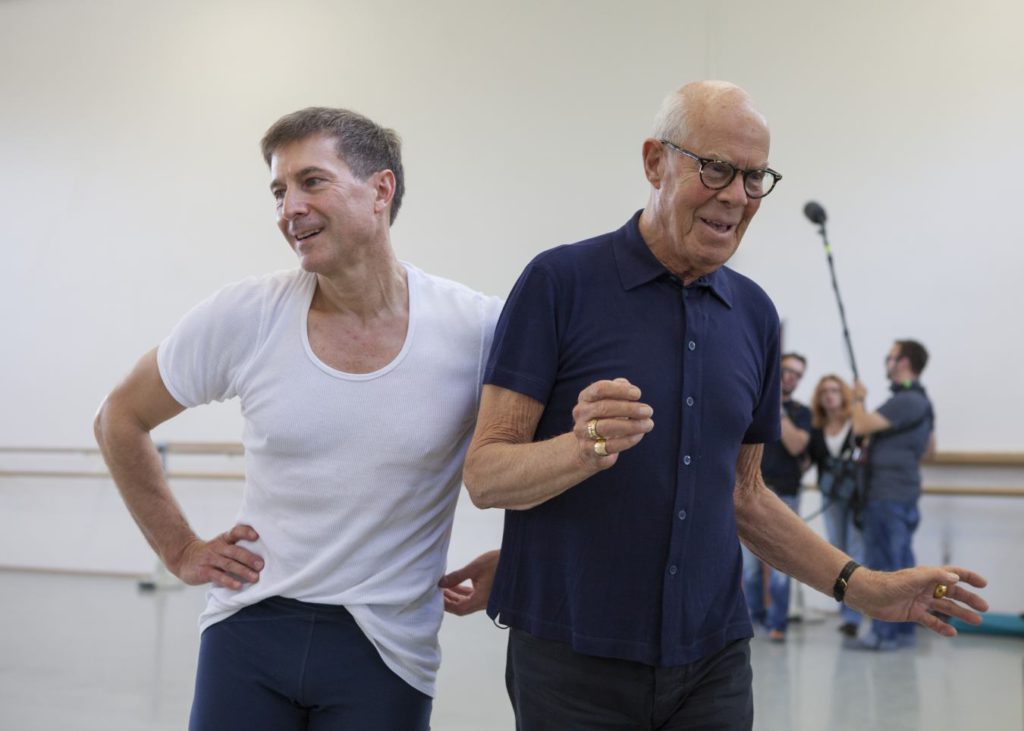 didn’t watch me when I walked there and that’s the reason I did it. It leads to greater consciousness about the space and [the fact] that humans are carrying out the action.
didn’t watch me when I walked there and that’s the reason I did it. It leads to greater consciousness about the space and [the fact] that humans are carrying out the action.
Koegler: Strikingly, there’s no piece in your quite extensive choreographic oeuvre, at least that I know about, for which you collaborated with a composer. Doesn’t that tempt you also?
van Manen: Yes.
Koegler: But . . .
van Manen: The best example – and I’m not being pretentious by saying it; he is someone I very much appreciate – is Balanchine working extensively with Stravinsky. He was lucky to have met such a friend. I was fortunate to have met 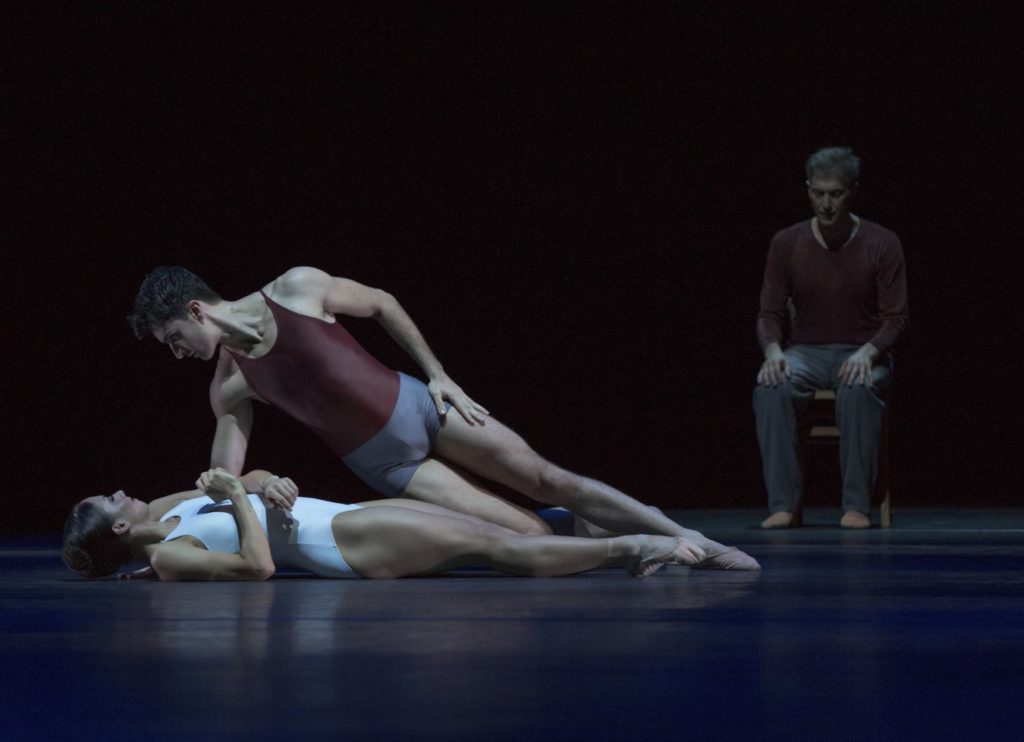 Jean-Paul Vroom, who sadly is not a composer, but a visual artist. Balanchine never worked with visual artists, he found Stravinsky. Well, to find Stravinsky and Vroom would have been an unbelievable coincidence. Too unlikely to happen. I never met a musician in Holland with whom I wanted to collaborate. I tried twice, with Luctor Ponse and with Géza Frid. With Ponse it went very well; with Frid less so – maybe because I was a bit frightened by the project.
Jean-Paul Vroom, who sadly is not a composer, but a visual artist. Balanchine never worked with visual artists, he found Stravinsky. Well, to find Stravinsky and Vroom would have been an unbelievable coincidence. Too unlikely to happen. I never met a musician in Holland with whom I wanted to collaborate. I tried twice, with Luctor Ponse and with Géza Frid. With Ponse it went very well; with Frid less so – maybe because I was a bit frightened by the project.
In the 1950s and 1960s there was much talk of “ballet music” and I was keen to prove that it was in fact nonsense. Actually one can choose any music to dance to. These days choreographers can choose any music they want. That’s magnificent. Some fantastic music would have never entered the theater if choreographers hadn’t chosen it, but instead had stuck to what is called “ballet music.”
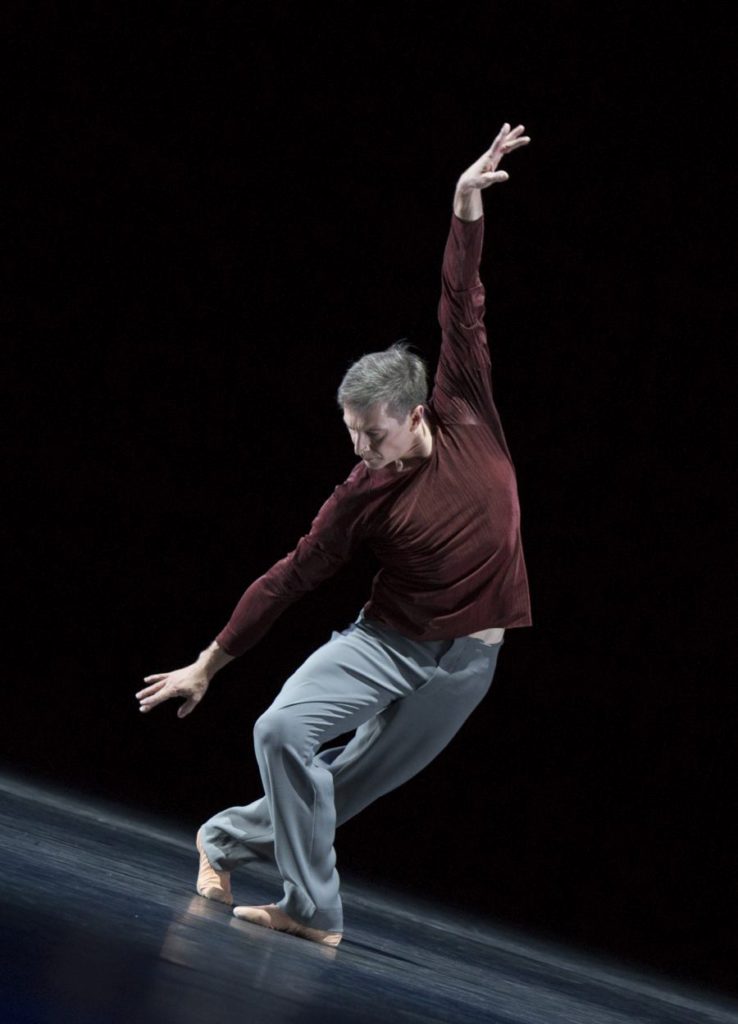
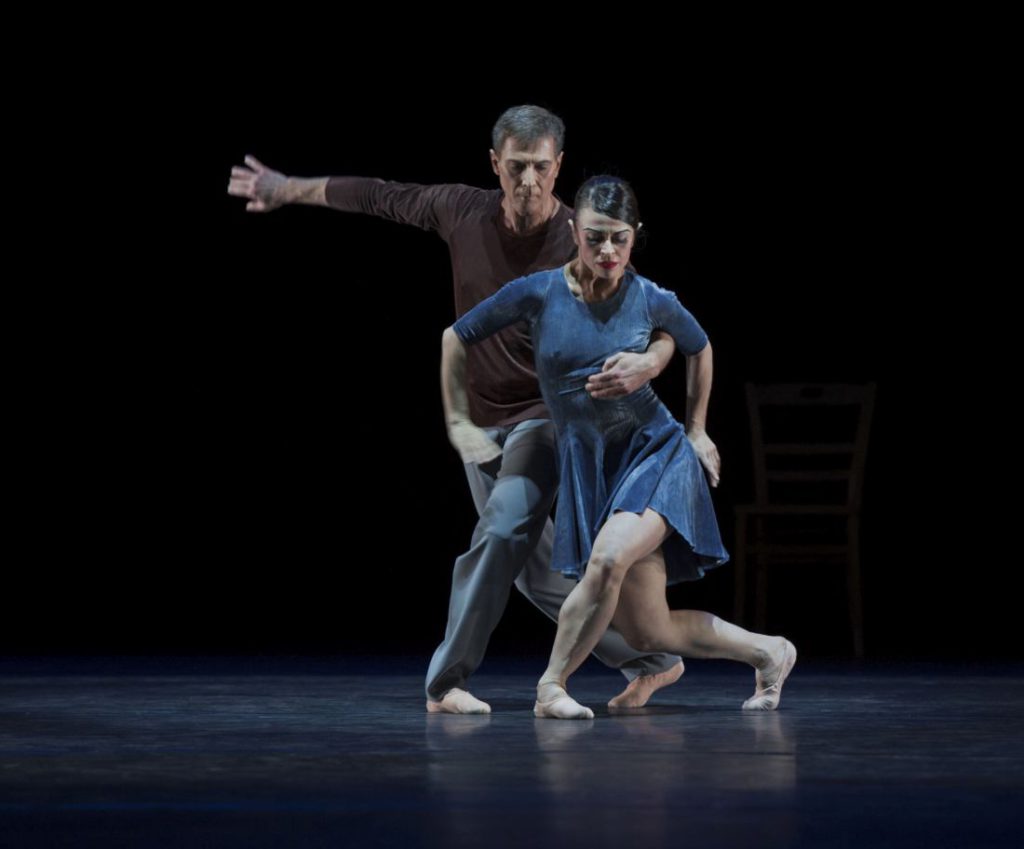 I would like to do something similar today, if I only knew a Diaghilev who would bring artists and composers together. All of you certainly want to have some new Diaghilevs [laughs]. Me too. I think we learned tremendously from him. We learned to choose good music to make ballets. Isn’t that the essence of Diaghilev, that we have to have fine costumes, good settings by decent artists.
I would like to do something similar today, if I only knew a Diaghilev who would bring artists and composers together. All of you certainly want to have some new Diaghilevs [laughs]. Me too. I think we learned tremendously from him. We learned to choose good music to make ballets. Isn’t that the essence of Diaghilev, that we have to have fine costumes, good settings by decent artists.
Koegler: But don’t you share the opinion that the important composers in the Diaghilev company were especially beneficial for the choreography – that Fokine, if he had built on his Russian salon composers, would have never developed in the way he did through his collaboration with Stravinsky? What I mean is that really important composers challenge choreographers to keep moving.
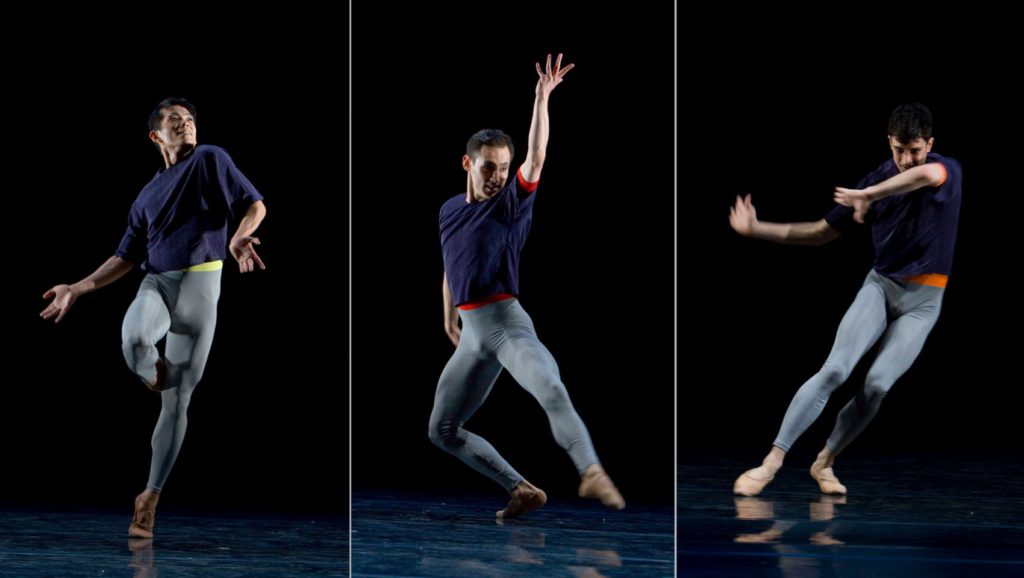 van Manen: I agree with you. But such people have to be there in that moment, again an example of rencontre. Billy Forsythe currently works with Hans Werner Henze. That’s a perfect example. But there aren’t masses of people of such caliber.
van Manen: I agree with you. But such people have to be there in that moment, again an example of rencontre. Billy Forsythe currently works with Hans Werner Henze. That’s a perfect example. But there aren’t masses of people of such caliber.
Koegler: Your work with Vroom is another option. Do his sketches mainly have a decorative function for you? Or are they an integral part of the whole? Do you develop the conception together?
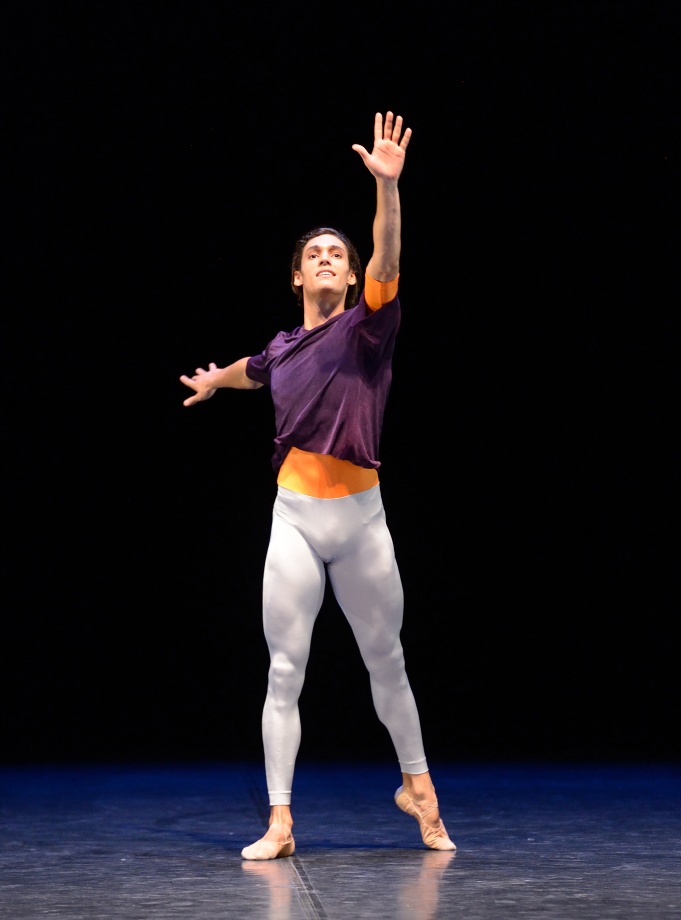
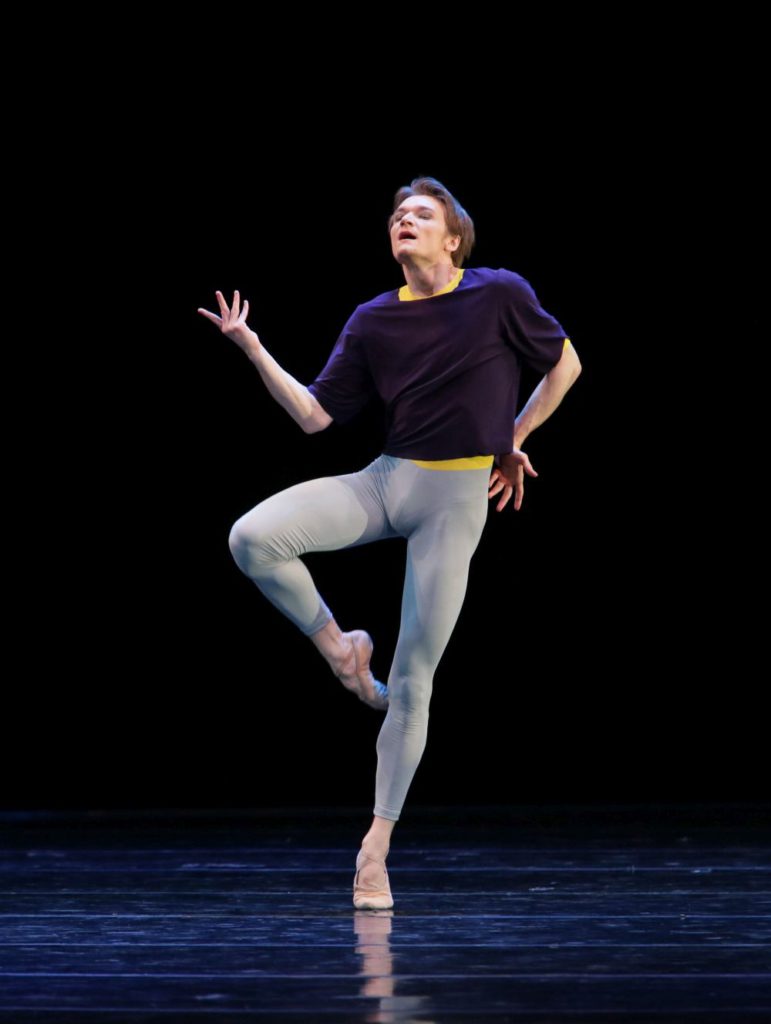 van Manen: I bring the music, although Vroom also suggests music. He is a very inspiring person and it’s difficult to separate our respective contributions. But in most cases I know in advance what music I want to use and I already have an idea of the form. Then we talk, about many things, not only about dance. For 5 Tangos Vroom’s designs certainly have a decorative function, but I remember my telling him about it. His immediate reaction was, “Now I know what I want to do, and have wanted it for a long time. Now I have the chance to realize it.” In the end it became a backcloth [backdrop]. He liked the letters, he had always wanted to do something with letters, and the letters of “Piazzolla” interested him.
van Manen: I bring the music, although Vroom also suggests music. He is a very inspiring person and it’s difficult to separate our respective contributions. But in most cases I know in advance what music I want to use and I already have an idea of the form. Then we talk, about many things, not only about dance. For 5 Tangos Vroom’s designs certainly have a decorative function, but I remember my telling him about it. His immediate reaction was, “Now I know what I want to do, and have wanted it for a long time. Now I have the chance to realize it.” In the end it became a backcloth [backdrop]. He liked the letters, he had always wanted to do something with letters, and the letters of “Piazzolla” interested him.
Then there is film. It’s again the visualization, the movement of the film. To me choreography and film are closely associated. They are two completely different vehicles, but they have something in common. Unlike dance, one can use language in films. That’s great.
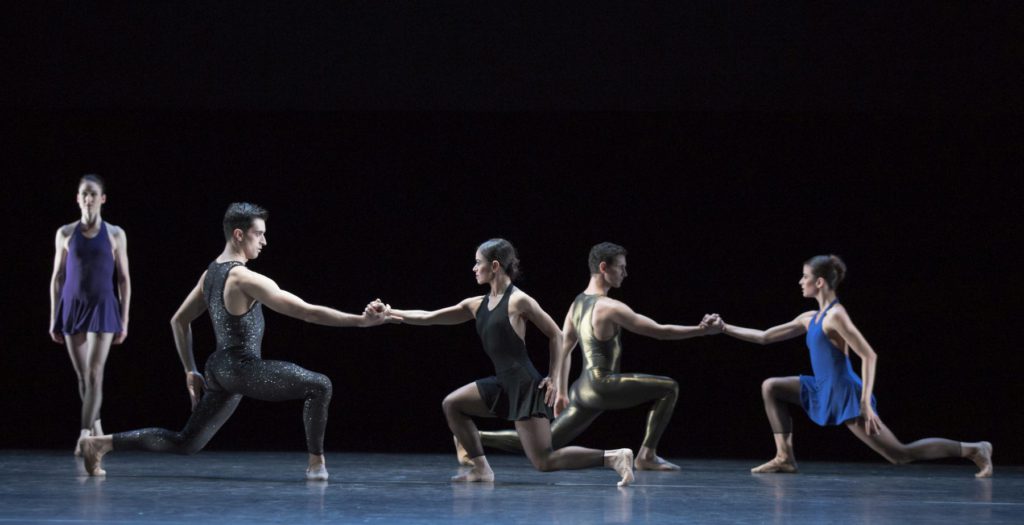 Koegler: But Pina Bausch makes ample use of it.
Koegler: But Pina Bausch makes ample use of it.
van Manen: Yes, and in fact Pina Bausch to me is the only choreographer using literary elements in a reasonable way. I consider ballet as less appropriate for literature. Have I got to explain that? [expectant pause, laughter]
Well, it’s just not apt. Dance is an art of movement; I’m incredibly interested in movement. Maybe that’s why I’ve never tackled a full-evening ballet, because creating an evening-long ballet without a story is almost impossible. It’s also obvious that in modern dance, which tends toward miming, it is a surrogate for using words. That’s my opinion. Unfortunately it’s not possible to express “Good God, how happy 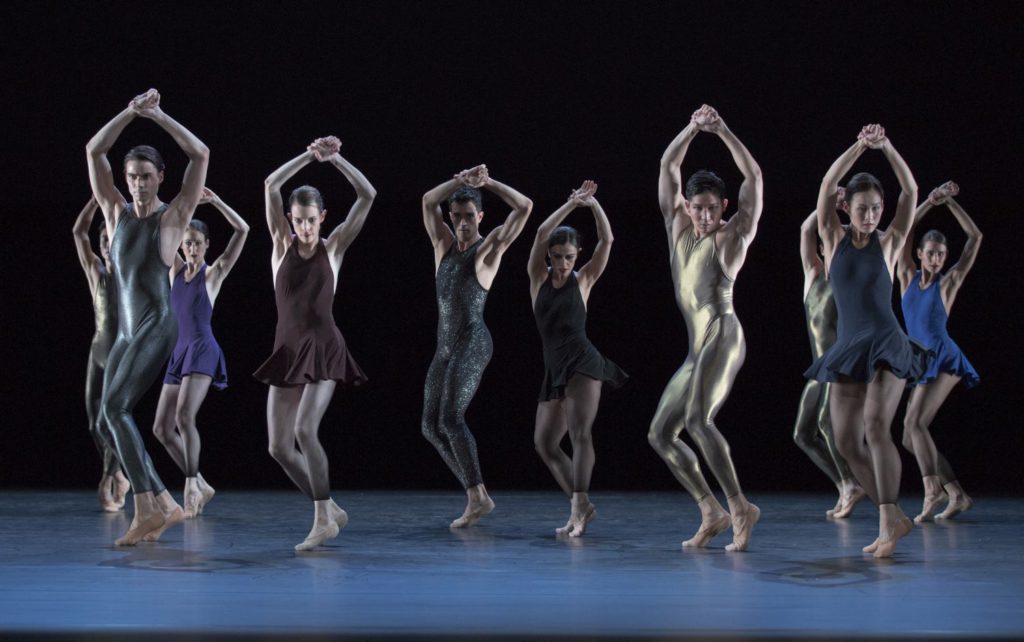 I would be having a cigarette right now!” in dance [laughter]. Nevertheless one tries to do so. To me that’s odd.
I would be having a cigarette right now!” in dance [laughter]. Nevertheless one tries to do so. To me that’s odd.
Koegler: Do you think dance can deliver specific messages or contents, to make concrete statements?
van Manen: Literary statements?
Koegler: Yes, except for . . . specific emotional situations.
van Manen: Sure, theoretically it’s possible.
Koegler: But it’s difficult to convey actions directly? To tell actions?
van Manen: Yes, that’s complicated.
Koegler: What do you think of political ballets? Has dance any chance at all of articulating in a political way?
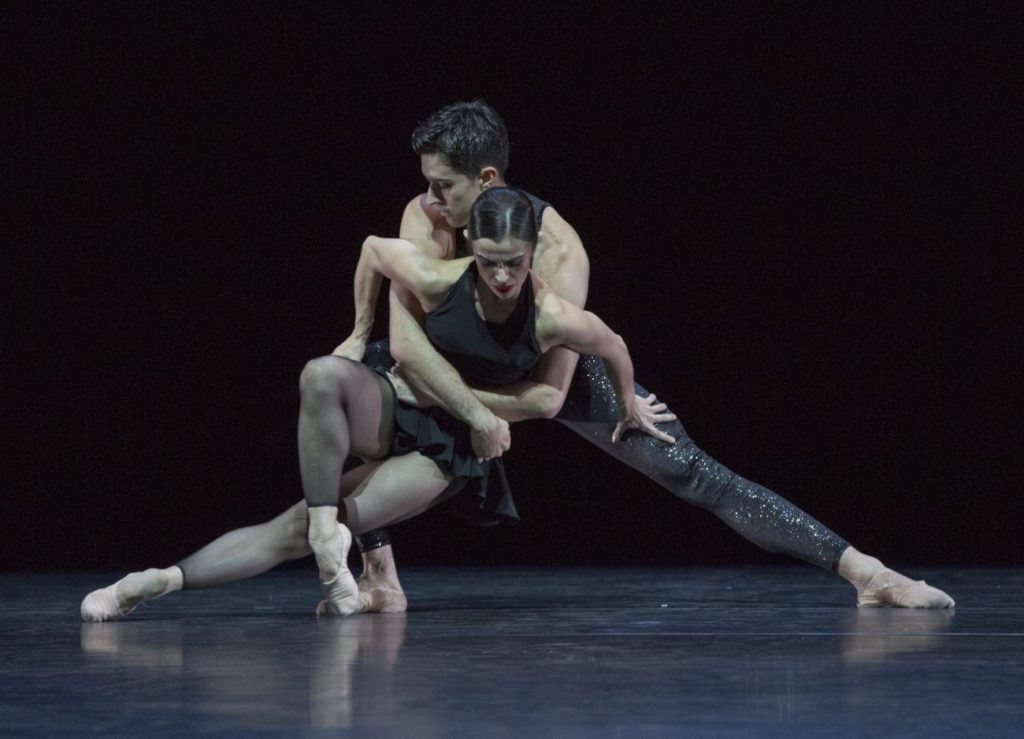 van Manen: Of course, that’s possible, if one finds an appropriate form. But I don’t believe it can be achieved solely through dance. There has to be a small screen as well, a little bit of film. We have to watch the famous Vietnam photos to be able to grasp that we’re dealing with a dedicated artist. I’m not wrong. That’s truly my opinion. Those tools have to be integrated. Then it already gets to be multimedia. Jooss said, too, and he repeated it shortly before his death, that The Green Table is not a political ballet.
van Manen: Of course, that’s possible, if one finds an appropriate form. But I don’t believe it can be achieved solely through dance. There has to be a small screen as well, a little bit of film. We have to watch the famous Vietnam photos to be able to grasp that we’re dealing with a dedicated artist. I’m not wrong. That’s truly my opinion. Those tools have to be integrated. Then it already gets to be multimedia. Jooss said, too, and he repeated it shortly before his death, that The Green Table is not a political ballet.
Koegler: What role does ballet have today? What kind of place does it have in Western society? And is the role different in societies that lean toward Moscow?
van Manen: Phew! Hopefully I understood your question! [pauses to think]
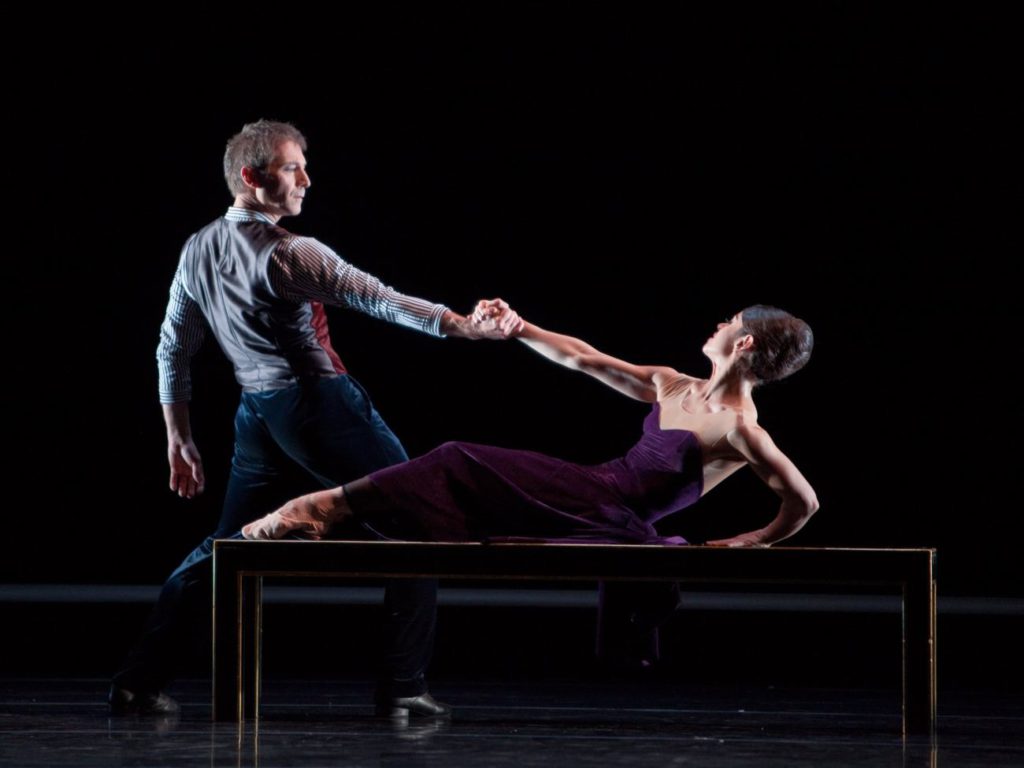
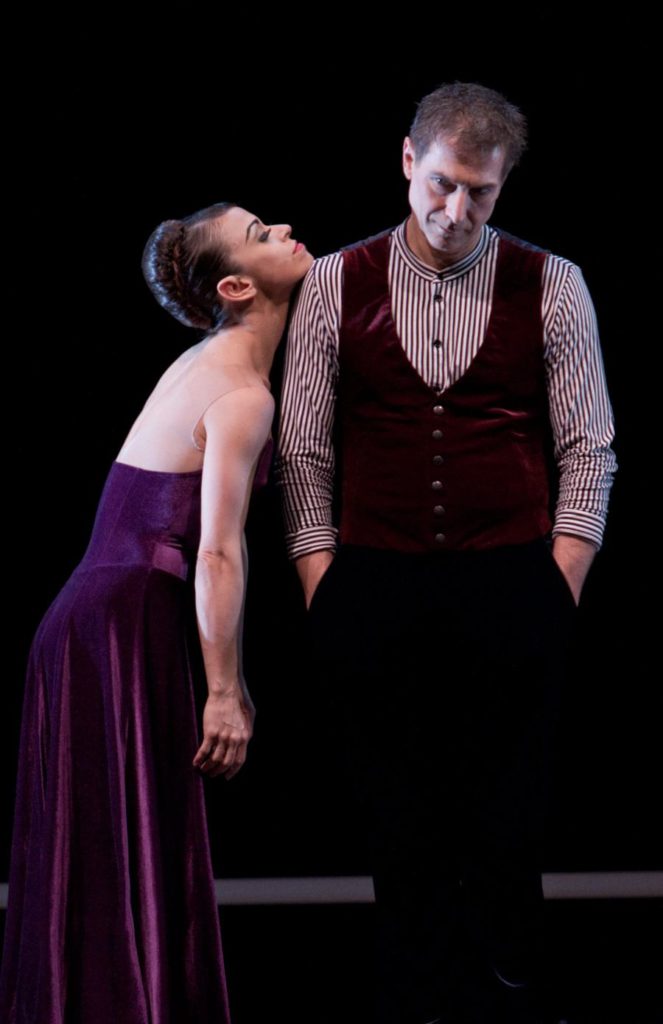 To me it’s almost unbelievable that the art of dance has gotten so popular, or popularized, throughout the whole world. It’s really incredible. I think people learned to look out for pictures, for visual sensations. Watching television has become a common practice now. I observed friends of mine had the TV switched on while the sound wasn’t. They kept an eye on the screen and suddenly they might go and turn the volume up. Thus, the pictures prompted them. That’s quite a special thing. We know much more about pictures than ever before. Also the kinetic arts were very instructive; I think that’s partly why ballet gained such popularity.
To me it’s almost unbelievable that the art of dance has gotten so popular, or popularized, throughout the whole world. It’s really incredible. I think people learned to look out for pictures, for visual sensations. Watching television has become a common practice now. I observed friends of mine had the TV switched on while the sound wasn’t. They kept an eye on the screen and suddenly they might go and turn the volume up. Thus, the pictures prompted them. That’s quite a special thing. We know much more about pictures than ever before. Also the kinetic arts were very instructive; I think that’s partly why ballet gained such popularity.
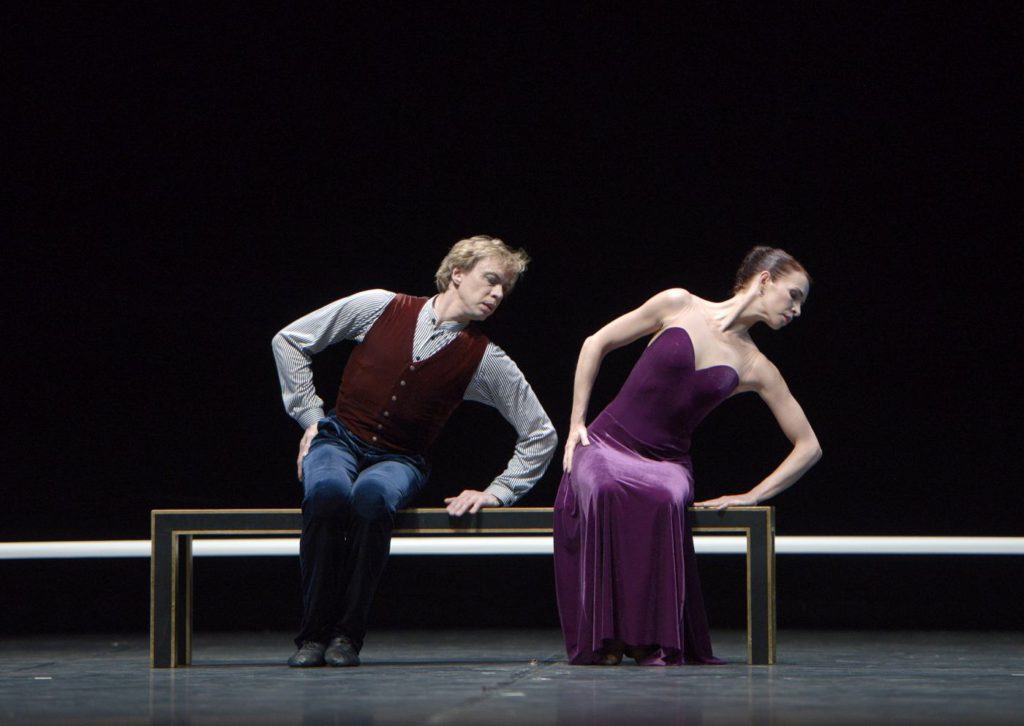 Koegler: Would you agree that Dutch ballet owes its enormous and really astonishing rise in the postwar years to the important role the Dutch have had in modern art? Or do you have another explanation?
Koegler: Would you agree that Dutch ballet owes its enormous and really astonishing rise in the postwar years to the important role the Dutch have had in modern art? Or do you have another explanation?
van Manen: It’s wonderful how you phrase that. Because from the viewpoint of the Dutch people it wasn’t as rapid as you say. In Holland it would be impossible to talk as we are doing here now. What the dancers and choreographers accomplished in Holland was possible only because we lacked a tradition. We had none. Our small audience back then was a fandom. When they saw something new they naturally welcomed it. If we had had a classical tradition and we would have been as modern as we actually were, the classical party would have booed us. It never was like that. Everyone was curious about what was happening and the small audience grew.
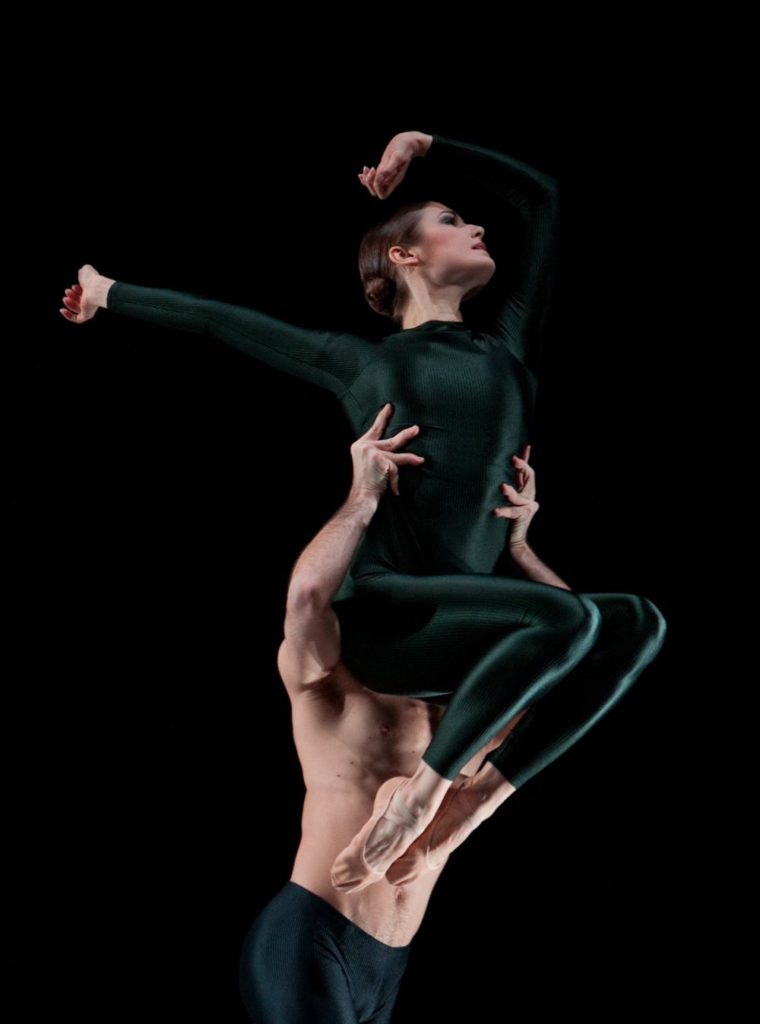 Also, we are subsidized. Subsidies are a paradise. It’s the most beautiful thing ever. It allowed us to do what we wanted. Another point is that there are people interested in the same ideas at the same moment in time, again an instance of rencontre. I always wonder about Diaghilev. Such people existed back then. It was special like that in the 1960s, too, which is why we call the 1970s “the years of the great dullness.” But that’s absolutely not true. For me the 1970s are a time of rediscovery. Our eyes were reopened to the unfamiliar – for example, becoming aware that Liszt’s last compositions were actually ingenious. Besides, many more small, modern troupes established themselves in Holland. A new company was brought into being to perform in schools for young people.
Also, we are subsidized. Subsidies are a paradise. It’s the most beautiful thing ever. It allowed us to do what we wanted. Another point is that there are people interested in the same ideas at the same moment in time, again an instance of rencontre. I always wonder about Diaghilev. Such people existed back then. It was special like that in the 1960s, too, which is why we call the 1970s “the years of the great dullness.” But that’s absolutely not true. For me the 1970s are a time of rediscovery. Our eyes were reopened to the unfamiliar – for example, becoming aware that Liszt’s last compositions were actually ingenious. Besides, many more small, modern troupes established themselves in Holland. A new company was brought into being to perform in schools for young people.
Koegler: The Scapino Ballet. Has it really raised and educated an audience? Are people more frequently coming to see your performances?
van Manen: Indeed. More and more people are coming to performances. Numbers have not decreased but steadily rise. We’re not as successful with the audience as in Germany or America, but our Dutch audience is faithful. Two things made that possible in Holland: the subsidies and the absence of tradition. There was no need to contrast ourselves with something already existing. We were able to do what we wanted.
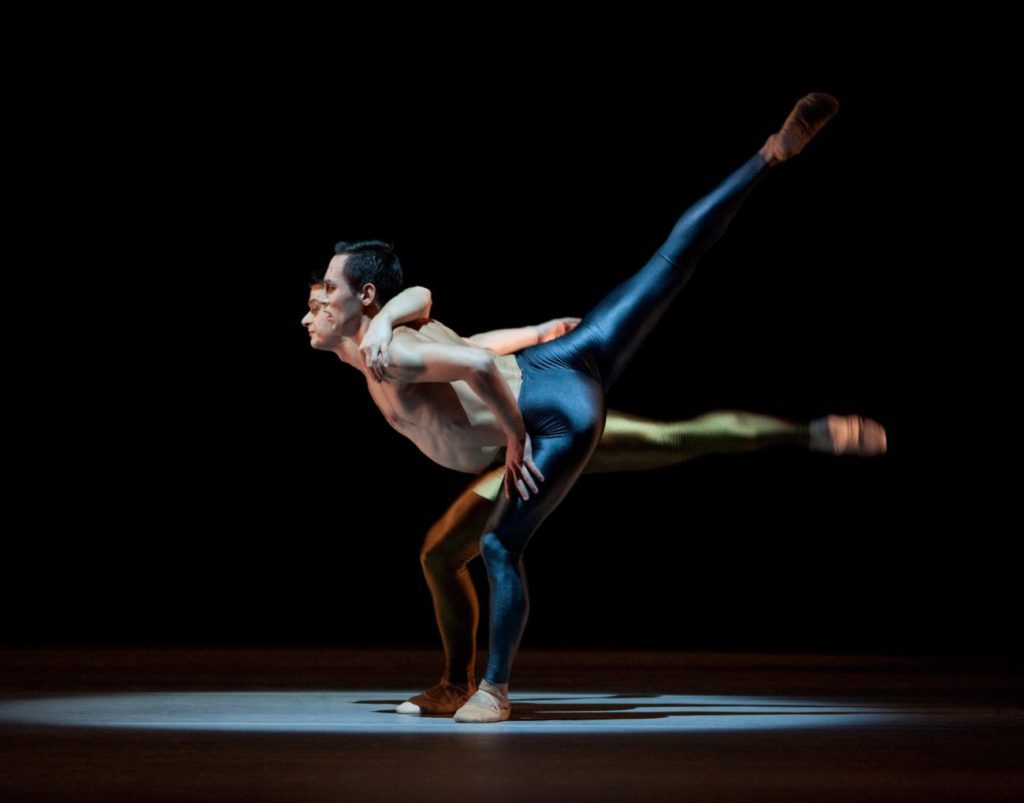 Koegler: We also had no tradition . . . . There was a gap of a thousand years.
Koegler: We also had no tradition . . . . There was a gap of a thousand years.
van Manen: But, yesterday I saw a book here in Stuttgart, a big book with photos, and it was on sale at a shop where you buy cigars and cigarettes. It was all about dancers.
Koegler: Yes, dancers from the 1920s.
van Manen: It’s terrific how many German dancers were famous at the time. And all of them danced actively. A big book with hundreds of pictures of German dancers. No Dutch tobacco company could have assembled something like that about Holland in the 1920s. So, in Germany there already must have been something. The book also showed photos of Martha Graham. Of Ted Shawn. In Holland we only got to know all this about twenty years ago.
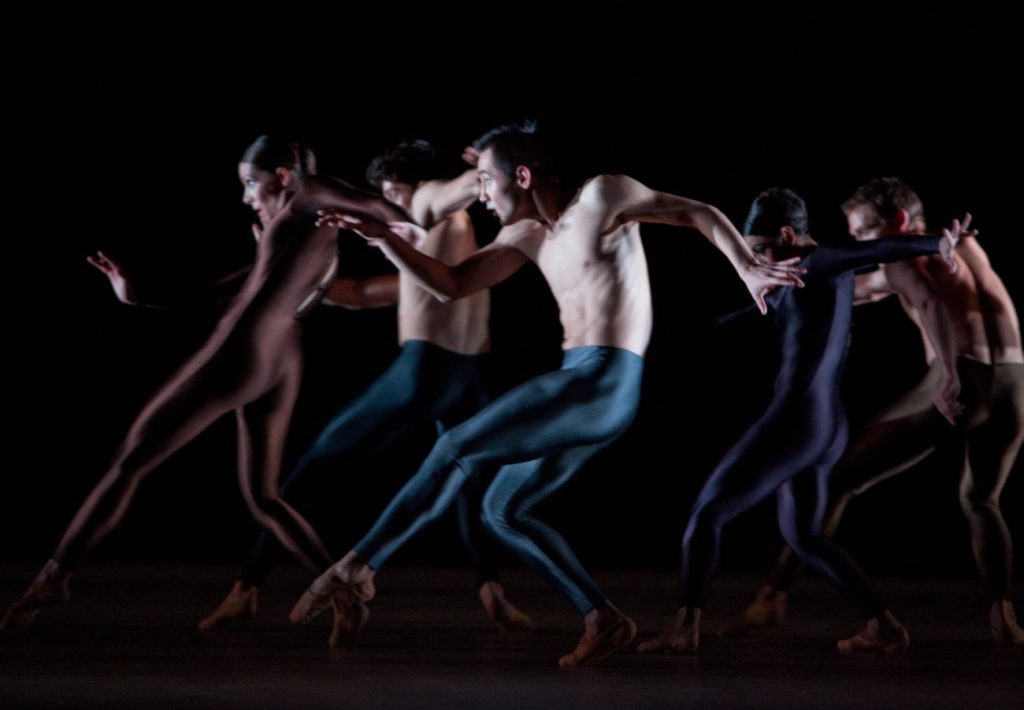 Koegler: You have also worked in Germany, in Munich, Düsseldorf, Cologne, and Berlin. What do you like of our system, our work, the work in terms of ballet? What are our weak points?
Koegler: You have also worked in Germany, in Munich, Düsseldorf, Cologne, and Berlin. What do you like of our system, our work, the work in terms of ballet? What are our weak points?
van Manen: Well . . .
Koegler: Our subsidies are even more generous than those in Holland.
van Manen: Yes, but you have to pick them out from under the thumbs of the theater administrators. That’s bad, absolutely wrong. I know administrators in Germany who only attend the premiere after the dancers, choreographer, and artistic director have toiled away and then they say, “Fantastic, as always, isn’t it?” I think that’s miserable. In my opinion, ballet companies in Germany should be independent of the administration – not from the opera company and not from the theater itself, but from the administrators.
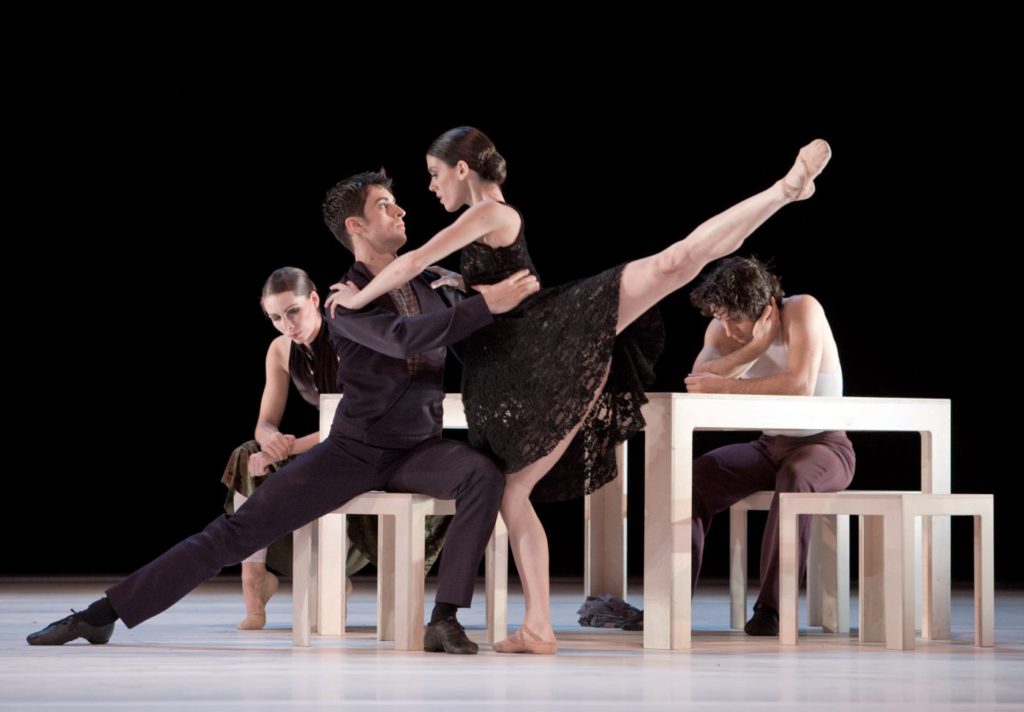 Operas, naturally, include ballet interludes. My new ballet is called Insert. I chose the title deliberately. Operas need dances and if the different ensembles work under the same roof, that’s easily possible. But I disapprove of administrators being politically and artistically involved in the work of the ballet companies. I don’t like that.
Operas, naturally, include ballet interludes. My new ballet is called Insert. I chose the title deliberately. Operas need dances and if the different ensembles work under the same roof, that’s easily possible. But I disapprove of administrators being politically and artistically involved in the work of the ballet companies. I don’t like that.
Koegler: So you advocate greater independence of ballet troupes?
van Manen: Yes, absolute independence.
Koegler: What kind of relationship does the Dutch National Ballet have with the Dutch Opera?
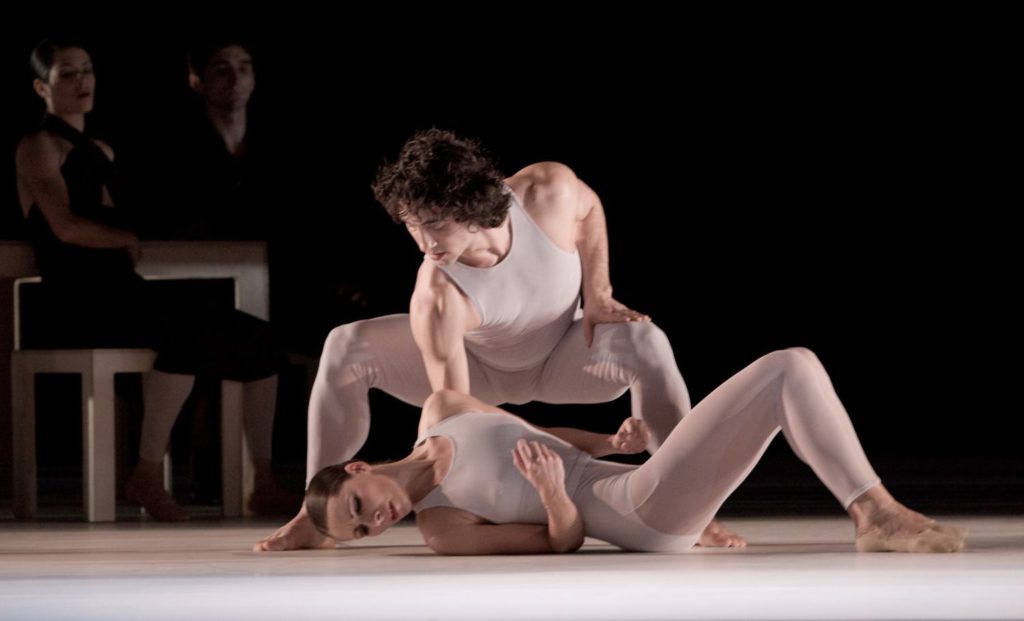 van Manen: We cooperate with the opera and we know each other’s repertory. It’s not as if the director of the Dutch Opera would suddenly jam six productions with big ballets into one season. It’s spread out. We have each other’s needs in mind. And it goes without saying that we always provide the opera with dancers. But we’re independent from each other.
van Manen: We cooperate with the opera and we know each other’s repertory. It’s not as if the director of the Dutch Opera would suddenly jam six productions with big ballets into one season. It’s spread out. We have each other’s needs in mind. And it goes without saying that we always provide the opera with dancers. But we’re independent from each other.
Moreover, I think, German ballet companies should do much more national touring, as we do in Holland. Düsseldorf should go to Stuttgart, Stuttgart to Cologne, Cologne to Berlin, and Berlin to Hamburg.
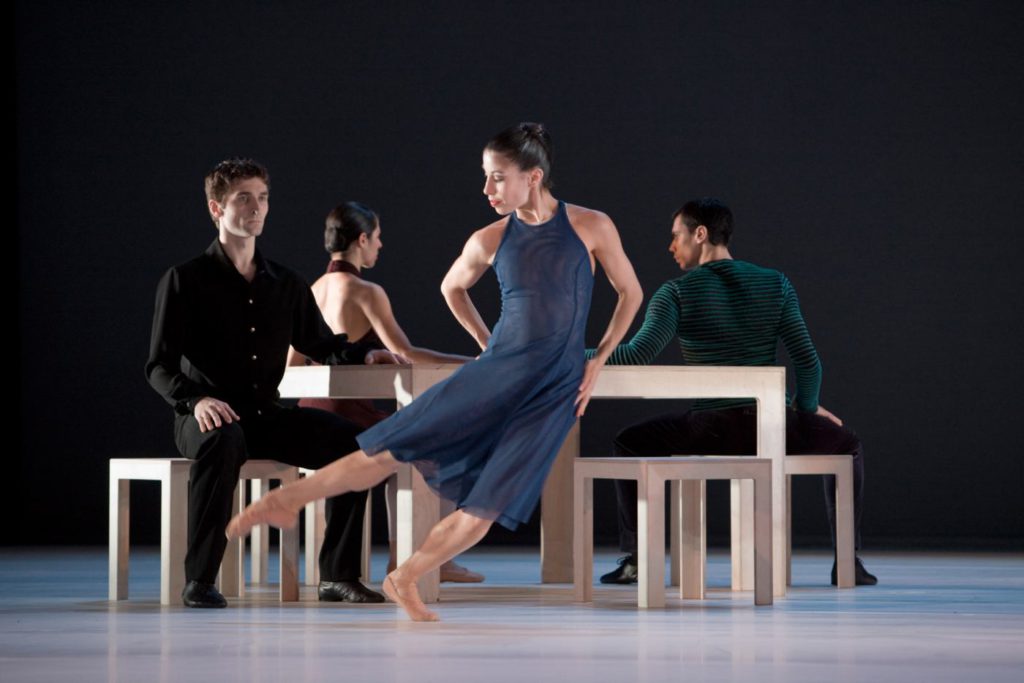 Koegler: Yes, but your situation is different. Except for Amsterdam, Dutch cities don’t have ballet companies of their own. Here every city has its own company. It would be enormously costly.
Koegler: Yes, but your situation is different. Except for Amsterdam, Dutch cities don’t have ballet companies of their own. Here every city has its own company. It would be enormously costly.
van Manen: There could be exchanges. Then it would only amount to traveling costs and daily expenses. Plus, of course, the transport of the sets and costumes. Nevertheless, much more exchange within Germany has to be possible. Marcia [Haydée], sitting somewhere in the auditorium here, must think, “Good God!” [laughs] Anyway, much more touring, much more exchange within Germany has to be possible. It would be extraordinarily healthy and highly revealing for the audience.
Koegler: Still, who would pay for the Stuttgart Ballet to travel?
van Manen: Düsseldorf [laughter]. You’re all ballet freaks here, of course [laughs]; this is a very special audience. However, there are people living in Düsseldorf who never get to see Pina Bausch. Twenty-five minutes by car, and yet they don’t go. Well then, Bausch has to go to Düsseldorf, and Düsseldorf has to go to Wuppertal. Horst, don’t you always complain that it’s a pity that Wuppertal’s audience is limited to Bausch? The performance has to be brought to the audience.
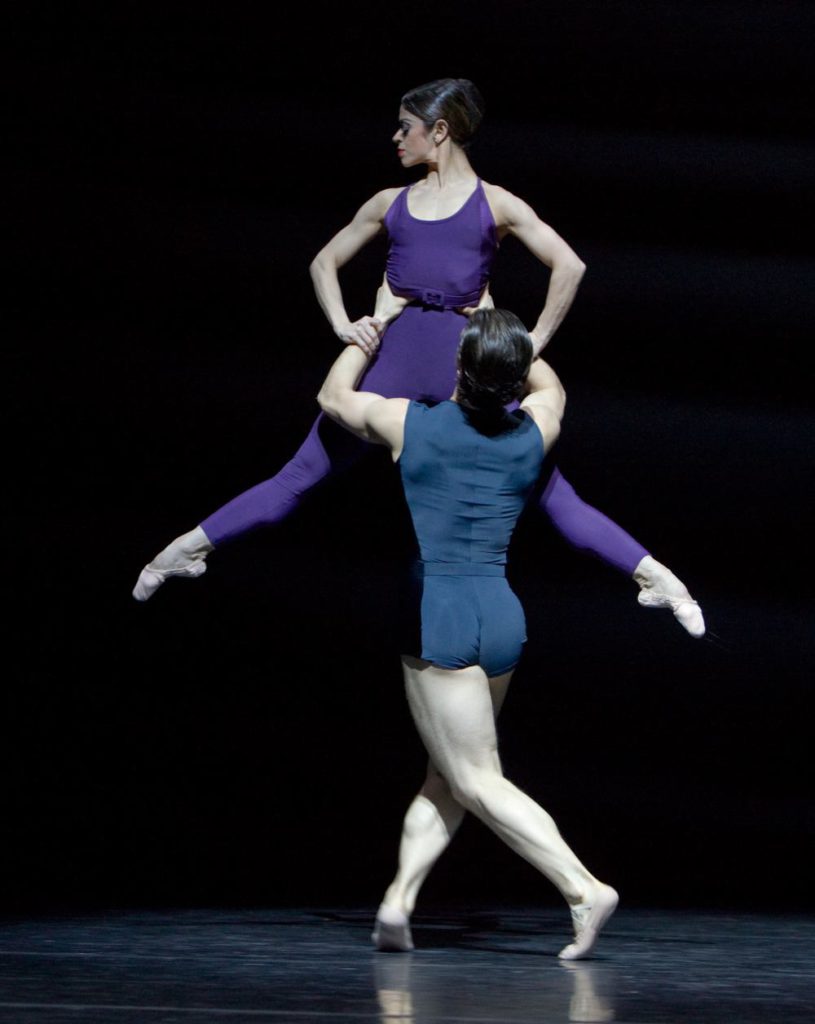 Koegler: Can you imagine not being concerned with ballet, doing something completely different?
Koegler: Can you imagine not being concerned with ballet, doing something completely different?
van Manen: No, I can’t.
Koegler: And would you like to be a ballet director again?
van Manen: Absolutely not. Do you have any idea how much I appreciate ballet directors? It’s unbelievable to me how they do their job. I’m such a grand egoist that I don’t want to do that again. I always think, “If Rudi van Dantzig is run over by a car tomorrow, than I’d have to do it once more.” That’s how it is [laughter]. If so, I would tell them that I know someone who’s better [laughs].
I was the director once and now I only want to be a choreographer. I know that’s very selfish. I’m really very happy at the National Ballet and I truly appreciate Rudi. He gives me such freedom. I can do as I please. Isn’t that tremendous? I’m able to become interested in many things and I have the freedom not to have to warm up to something I don’t like. When I have time to reflect on this freedom, I realize how fantastic it is. I would like to keep it that way.
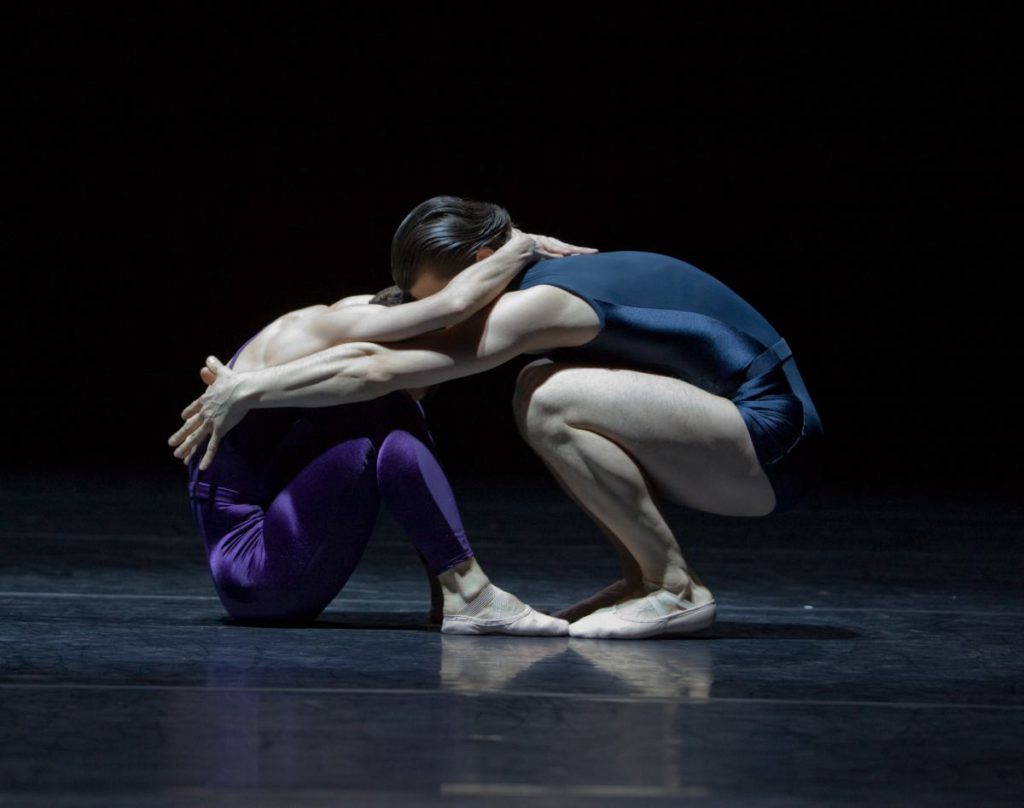 Koegler: How is your relationship to ballet criticism? While you meet a very positive response here, you face quite intense criticism in America. I would also like to know your thoughts on the very different reactions of Americans and Europeans to ballets by Béjart and Neumeier.
Koegler: How is your relationship to ballet criticism? While you meet a very positive response here, you face quite intense criticism in America. I would also like to know your thoughts on the very different reactions of Americans and Europeans to ballets by Béjart and Neumeier.
van Manen: It is a myth that New York sees everything. When the Bolshoi Ballet, or Stuttgart Ballet, or Dutch National Ballet tours to America, it brings two or three programs. But one gets to know absolutely nothing about the company. Then one program, chosen by the New York impresario, is successful or not. However, one doesn’t get to know a company only by its successes, but rather by its repertory policy. It’s risky for a company to give choreographers chances, because the pieces might fail. There’s nothing to be done about that, but that’s how you become acquainted with a company.
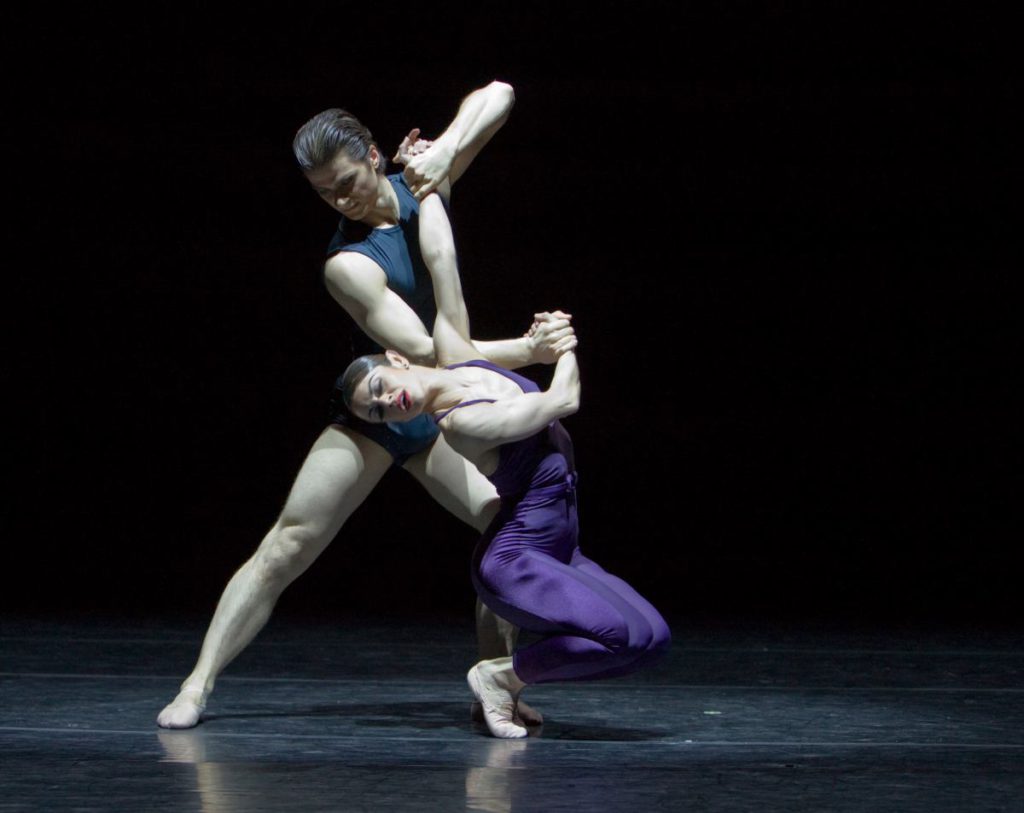 Regarding myself, there’s hardly anything known about my work in America. Some of my ballets were shown in the United States, but actually their reputation preceded them. They were already successful here. But if the American critics claim that Hans van Manen has absolutely no success in the States, I wouldn’t be surprised. Compared to people here, they haven’t seen very much of my work. I have created sixty ballets of which they have seen twelve. Who knows about the less successful ballets that were, however, very important for the whole development?
Regarding myself, there’s hardly anything known about my work in America. Some of my ballets were shown in the United States, but actually their reputation preceded them. They were already successful here. But if the American critics claim that Hans van Manen has absolutely no success in the States, I wouldn’t be surprised. Compared to people here, they haven’t seen very much of my work. I have created sixty ballets of which they have seen twelve. Who knows about the less successful ballets that were, however, very important for the whole development?
When I visit the United States and get into discussions I say, “You wrote this” and “You wrote that.” That is my relationship to critics. I read them all. Criticism is immensely important for me. But only to focus on successes . . . . A choreographer has to choreograph for at least forty years. To me that’s normal. It’s the same with composers and writers – with everyone. It is so rewarding for an audience to follow this development. That’s how one gets a good eye, not by knowing a few successful works. I believe that what New York gets served is the best average of successful ballets and a good box office.
And I won’t change my opinion about the American dance economics. It’s terrible that they get so little government subsidies. It’s incredibly difficult for American ensembles to keep their heads above water. They absolutely know what’s good art, but they also know that there has to be a bit of ballyhoo here and there to get the audience in. They know that they can’t take the liberties we allow ourselves in Europe to experiment in the way we do.
| Everybody knows the people who experiment in the States, such as Merce Cunningham or Martha Graham. They wanted something and achieved it with five or six or seven dancers. And friends helped pay for it. That is how that worked. What they had to accomplish with only a few people we are able to do with seventy-three people in Europe today. That’s fantastic. But in my opinion, evening-filling ballets should be created and the great classics must be brought to the stage. One has no perspective on dance art if the classics are missing. People have to get maximal opportunities and a maximal range of choices. Otherwise it turns into a religion. |
Koegler: We should slowly come to an end because people in the audience must have a few questions. But maybe you can tell us a little bit about your private life first. What does the choreographer Hans van Manen do when not busy with ballet?
van Manen: He takes photos. It’s a hobby. . . . Photos of nude young men [silence]. There should be laughter now. [Koegler laughs.] Mainly I take photos of dancers, and there’s a certain reason why I do this. I know so many painters, and so many artists, who work by and for themselves. I regularly said to Vroom, “It’s great, isn’t it? You sit in your room and suddenly you might decide to go upstairs to paint a while.”
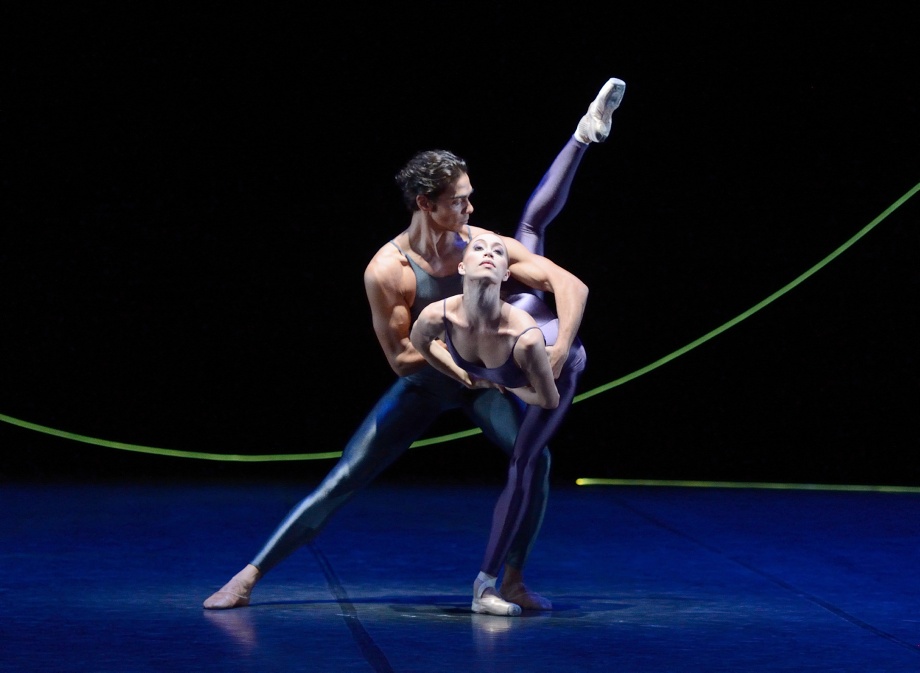 That’s impossible for a choreographer. He or she can’t simply decide to go and choreograph a bit [laughter]. There is always the studio, the theater, the dancers, the music, the time. You can’t work all alone and on your own. One can’t keep working when thinking that it isn’t good enough yet. Because in our house the premiere is always fixed: on the 13th of the month there will be a premiere. There’s never much time and you work like crazy.
That’s impossible for a choreographer. He or she can’t simply decide to go and choreograph a bit [laughter]. There is always the studio, the theater, the dancers, the music, the time. You can’t work all alone and on your own. One can’t keep working when thinking that it isn’t good enough yet. Because in our house the premiere is always fixed: on the 13th of the month there will be a premiere. There’s never much time and you work like crazy.
The premiere looms and the piece is thrown to the lions. They sit everywhere in the audience. No problem with that, but you never have the chance to rethink a work, to decide that it’s not ready yet, to ponder about it for another week. Alas, that’s impossible. That’s just how it goes. When I used to complain, my mother would say, “But you wanted it like this.” She was right. I always have that in mind.
Koegler: And when taking photos you’re not subject to such constraints?
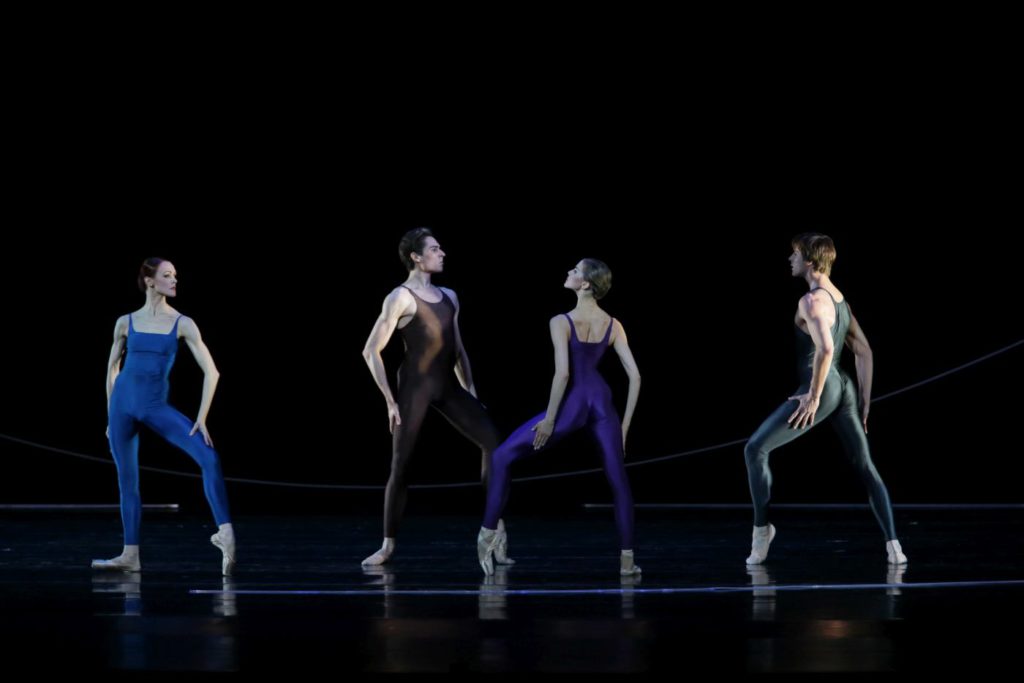 van Manen: No, I can do it completely for myself. What I’m really doing is freezing movement. I don’t like photos showing action. The ones I take are very posed. I love poses. It’s the same in my choreography, a love of poses. There is movement, but at the same time there are poses, too. Of course, I’m interested in physicality and the body’s muscles.
van Manen: No, I can do it completely for myself. What I’m really doing is freezing movement. I don’t like photos showing action. The ones I take are very posed. I love poses. It’s the same in my choreography, a love of poses. There is movement, but at the same time there are poses, too. Of course, I’m interested in physicality and the body’s muscles.
Usually we talk of muscles only in the context of bodybuilders. That’s the extreme, but the basis is the same with all people. I also like people who are very thin. And people who are wearing glasses. Yes, you’ll never find nude photos showing someone wearing glasses. That shows how unemancipated photographers are. It’s like a sex advertisement: No spectacle wearers [laughter]. Or no beards. Seeing something like that is absolutely incomprehensible to me. What I like when photographing is . . . [stands up, demonstrates]. That’s what I take photographs of. So that is what I’m doing when I’m not occupied by my work.
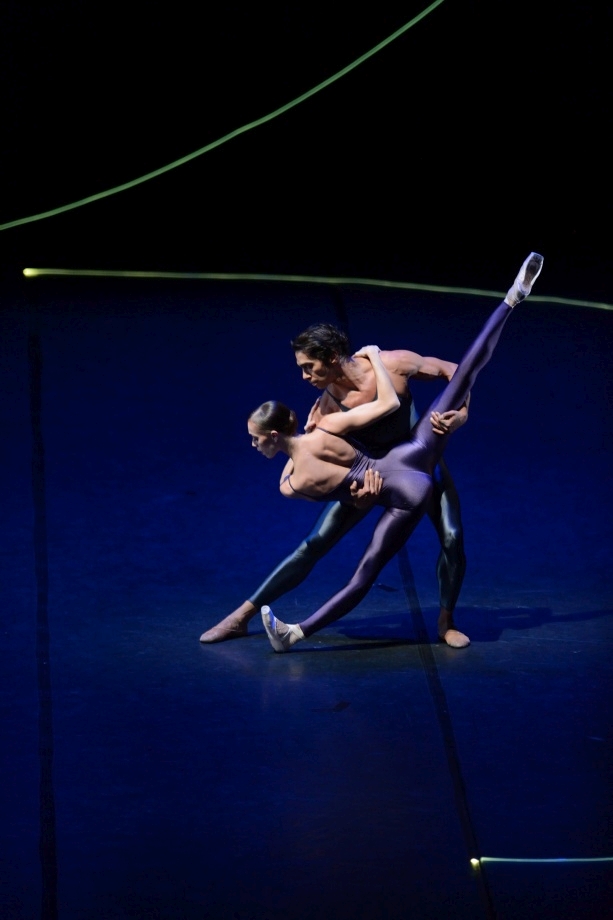 Koegler: May I invite the audience to ask some questions now?
Koegler: May I invite the audience to ask some questions now?
van Manen: There are no silly questions, only silly answers [laughter]. It’s true. Please.
Koegler: Yes. [inaudible question]
van Manen: My viewpoint on ballets on TV? Did I hear you right? Well, we have all paid our dues to television. It’s the inevitable issue – the ego. If a TV director wants to film a ballet and they want to do it after their fancy at any price, then I think, “Good God, why don’t they make a ballet themselves? Or invent a scenario and ask a choreographer to flesh it out afterwards?” That might work quite well. But if they film ballets that have already been on the stage, they have to acknowledge what’s already there. Merely being attentive and perceptive are the most difficult things. But they rarely want to do that. Maybe they imagine they would then have made no contribution.
Who of you watched the Callas gala on TV in 1959, when she sang in Hamburg? I’m so grateful to the man who directed it. He should be honored with a statue in front of the theater. For one and a half hours he filmed Maria Callas, just her. Not the violins, no conductor. Usually I get crazy, all those violins! Presumably the director wants to show his sublime knowledge of music. It’s the same with ballet. To give you an example, it’s really incredible [stands up to demonstrate]. If I go through a diagonal the path is a bit longer compared to the stage’s width. If you watch it in TV the diagonal looks like this [walks]. It’s absolutely comical.
Koegler: But don’t you agree that there are ballets that would come across better on television than onstage?
van Manen: Which ones? [Audience applauds and laughs.]
Koegler: Of your Hammerklavier, for example, I preferred the version on TV to the live one recently here in Stuttgart. That isn’t the same for all performances, but the latest one I saw here wasn’t ideal compared with the version on TV. However, didn’t you have pretty good experiences with Manfred Gräter and the television broadcaster in Cologne.
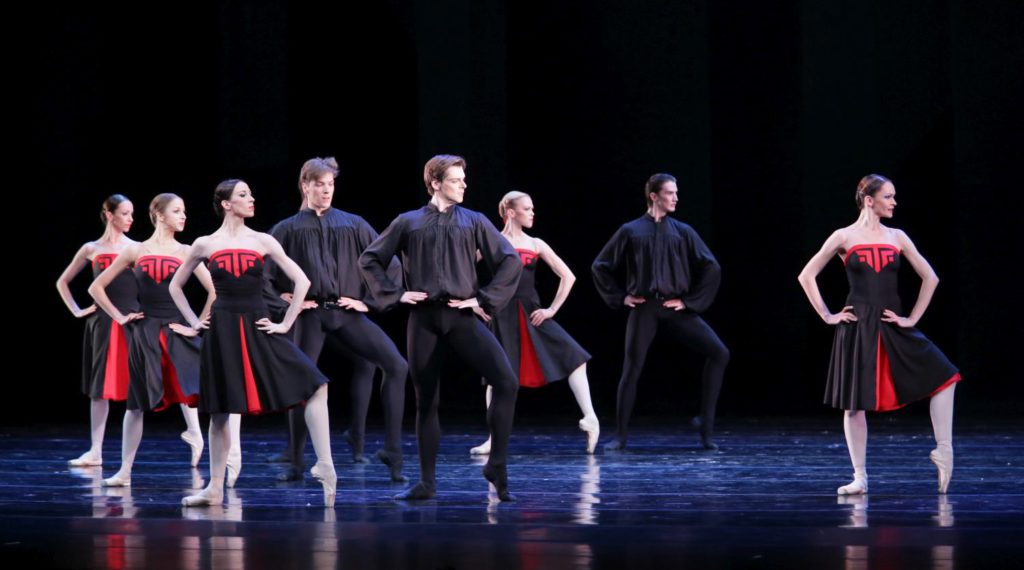 van Manen: Yes, but in that case I’m not talking about myself. There are some examples I definitely never want to watch again. It’s possible that Hammerklavier was better on TV. It’s a very concentrated piece. Maybe the decor wasn’t lit perfectly. If there’s too much light one loses the focus. Specific moments have particular purposes. But one shouldn’t generalize. I love television, I’m a bit of a television fanatic. As far as I’m concerned they could broadcast ballet on TV day and night, even poor ballets. But I think that TV shows could be done much better.
van Manen: Yes, but in that case I’m not talking about myself. There are some examples I definitely never want to watch again. It’s possible that Hammerklavier was better on TV. It’s a very concentrated piece. Maybe the decor wasn’t lit perfectly. If there’s too much light one loses the focus. Specific moments have particular purposes. But one shouldn’t generalize. I love television, I’m a bit of a television fanatic. As far as I’m concerned they could broadcast ballet on TV day and night, even poor ballets. But I think that TV shows could be done much better.
Manfred, of course, is fantastic. He comes around and I suggest, “All right, have a look at this video.” After he had seen it he commented, “It’s a pity that it’s in black and white. Otherwise we would have broadcasted just this one.” He was right. He has an eye for such things.
| In Holland we have a video master, Henk van Dijk, who’s very talented. He danced for quite some time though never became a professional dancer, and he has an eye for choreography. If people exit or enter the stage, he will acknowledge it. And he works with only one camera. If one enters he always films in total view and subsequently zooms as close as possible. That gives very interesting results. A television team has to be perceptive for details, for what already exists. I don’t understand why they apparently reject this. Why does everyone believe he or she has to add to an already existing work of art? It’s already art and then another person tries to make art of this art and the next one as well. I can’t understand that. Why not simply perceive? |
It’s as if in recorded music, the sound editor thinks the flutes are terrible but not the trumpets, so he decides to amplify them and one gets only the trumpets. The ballet is approached in the same way. Nevertheless I have seen good examples, too. Take Balanchine’s Concerto Barocco, which was filmed in Berlin. People went crazy crying while watching it. I have never 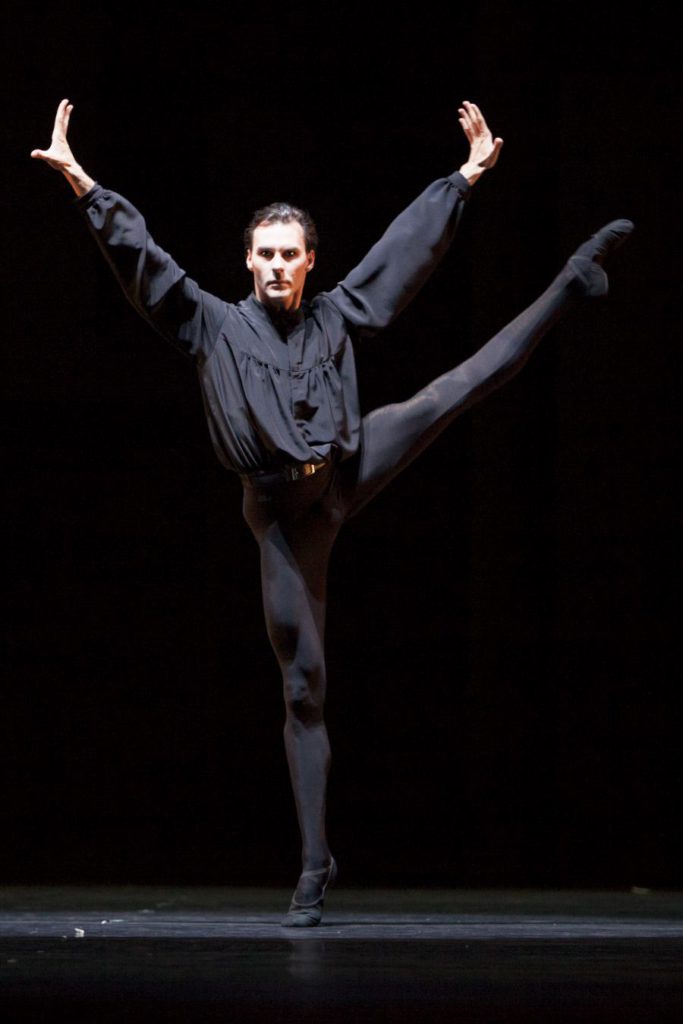 seen it live, only on TV, and at the beginning I was a bit angry with the many cuts, but, actually there aren’t so many. Eventually I watched the ballet twenty times on television, and I don’t see the cuts any more. The editor really took care to lose nothing of the ballet. It’s a well-made recording. Not like the Stars and Stripes. Once I counted the cuts and if I remember it right, there are 248 of them. In a twenty-minute ballet.
seen it live, only on TV, and at the beginning I was a bit angry with the many cuts, but, actually there aren’t so many. Eventually I watched the ballet twenty times on television, and I don’t see the cuts any more. The editor really took care to lose nothing of the ballet. It’s a well-made recording. Not like the Stars and Stripes. Once I counted the cuts and if I remember it right, there are 248 of them. In a twenty-minute ballet.
Question: [barely audible, about political ballets and narrative ballets]
van Manen: I know exactly what I want and what I think politically. For sure, a ballet conveys a specific mentality. But if I see a photo showing, for example, five homosexuals being executed by Khamenei – no, I can’t deal with that in a ballet. I cut the photo out and pin it up in the corridor, hoping many people will ask about it. They indeed ask regularly, and I always tell them. That’s what I do. But I’m unable to create a ballet about it. The topic is more apt for literature. Not for music either, judged by Shostakovich’s memoirs, an excellent book. If one considers his memoirs as true, then he has been wrongly judged. I think these memoirs are authentic. They very much got to me. It’s too bad that art cannot convey such things.
Regarding story ballets, I can’t create such ones. I don’t dare to. At a certain moment I start to be ashamed if I have to demonstrate something for a dancer. I have to talk so much, to explain what in fact cannot be said with words. That’s why, at least, I’m incapable of doing it. Take films – for example, the beginning of Apocalypse Now. How shall one accomplish that with ballet? Compared with that I am only a little amateur. I can’t do such things. I can’t show that to an audience.
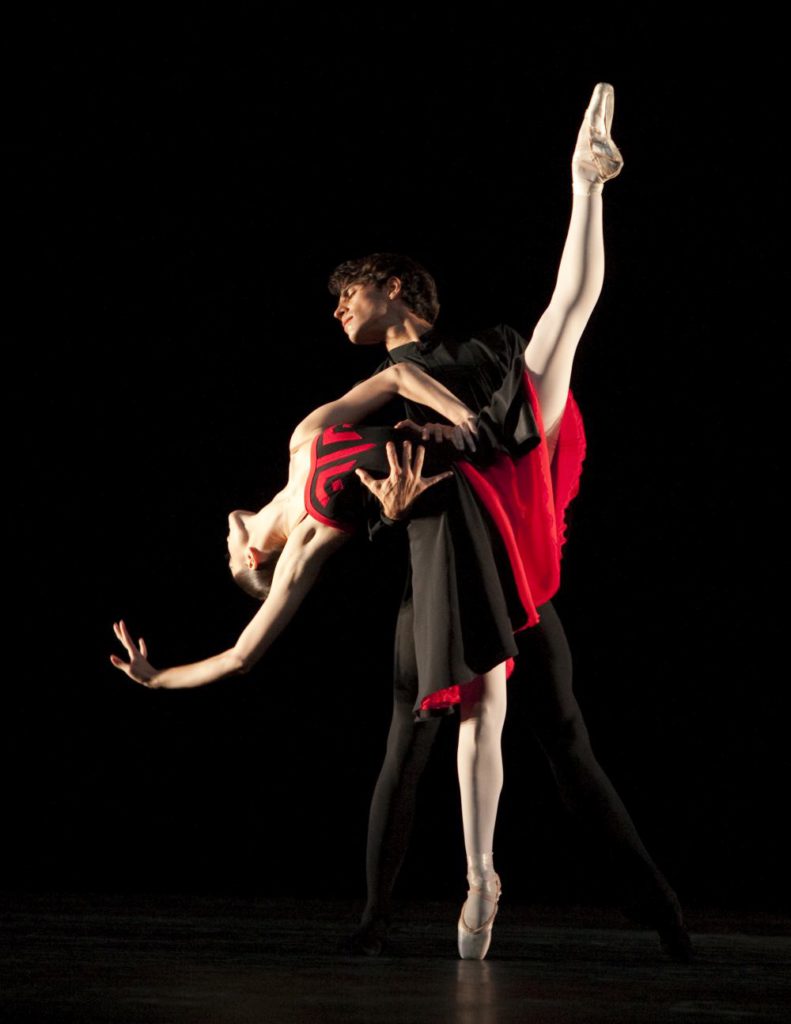 Question: If you agree to broadcast one of your pieces, do you allow it to be altered?
Question: If you agree to broadcast one of your pieces, do you allow it to be altered?
van Manen: If one says A, one has to say B as well. To me it’s absolutely wrong to allow something at first, and if the outcome is bad to withdraw permission. I have never thrown a dancer out of one of my ballets, either, even if he or she gave a poor performance. Never. Because initially I made a choice, so I have to integrate this dancer. I won’t turn my back on this dancer, because it’s my mistake to begin with.
Question: You are regarded as a very humorous choreographer. Where does your humor come from [laughter]. Did you experience failures and how do you deal with them?
van Manen: The first question is difficult to answer. I have a good sense of humor, which doesn’t necessarily mean one is able to create good comedies. They are not related.
Failures? Hmm . . . . Well, I call the critics, if I don’t like what they wrote or if they got something wrong. That’s primarily my concern in such cases. I have no problem with critiques and, of course, I have gotten many bad reviews. There are moments where I don’t care a cent. But if it’s from people I admire, I get angry. Then I call them. I might not be happy when I hang up, but at least it’s done and I can concentrate on something else. Maybe I shout a bit.
From time to time at premieres I think there will be a loud “Boo” when I have to take my curtain call. I have experienced my colleagues being booed and I’m always afraid, “Jesus, what if it happened to me? How would I react?” It’s also very embarrassing to witness such moments, especially if one is well acquainted with the respective people. How they move and even bow. I can’t watch. It’s too terrible for me.
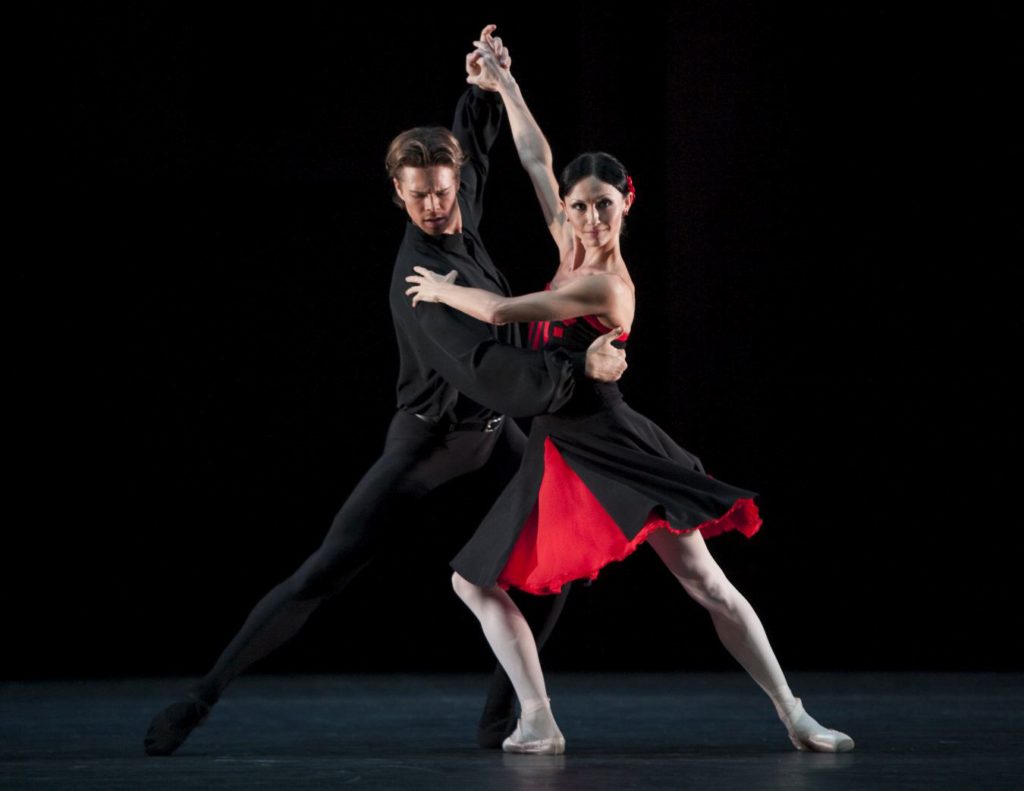 Occasionally I want to look over the shoulders of those people sitting in the audience that evening, when they’re at work in the office. When they make a mistake, 500 people will stand behind them, all shouting, “Boo!” That’s something I’d really like to take part in. I always think I’ll do like this [sticks out his tongue], maybe because of the famous news photo of Einstein. That’s how I imagine defending myself – with the tongue of Einstein. But, for sure, it would be horrible and I would be very ashamed of myself. Better it doesn’t happen [laughter]. If I could, I would bribe all of them [laughs]. No, I’m joking.
Occasionally I want to look over the shoulders of those people sitting in the audience that evening, when they’re at work in the office. When they make a mistake, 500 people will stand behind them, all shouting, “Boo!” That’s something I’d really like to take part in. I always think I’ll do like this [sticks out his tongue], maybe because of the famous news photo of Einstein. That’s how I imagine defending myself – with the tongue of Einstein. But, for sure, it would be horrible and I would be very ashamed of myself. Better it doesn’t happen [laughter]. If I could, I would bribe all of them [laughs]. No, I’m joking.
Koegler: Do you sometimes feel after a premiere that the ballet turned out to be not perfect?
van Manen: Of course. One can’t deceive oneself. I know it precisely. Sometime it needs more time. The most beautiful thing is to see the ballet again after one month. One sees it for the first time at its premiere, but one isn’t calm enough. I always want to sit and relax, but then I think “Oh my God!” and walk out. One can’t have that critical approach at that moment, that would be beyond one’s human abilities.
It has nothing to do with self-criticism. One was too deeply immersed in the project. It’s as unimaginable as a woman having a baby and people come round and saying, “What an awful nose” [laughter]. One needs time to figure a ballet out. And it’s nice to have friends. Friends never lie. They say, “Fantastic.” No more. And then one already knows it’s bad [laughs]. But, if they have difficulty finding the right words, then one can be sure it was good.
The article was published first in Ballet Review 44.2, Summer 2016.
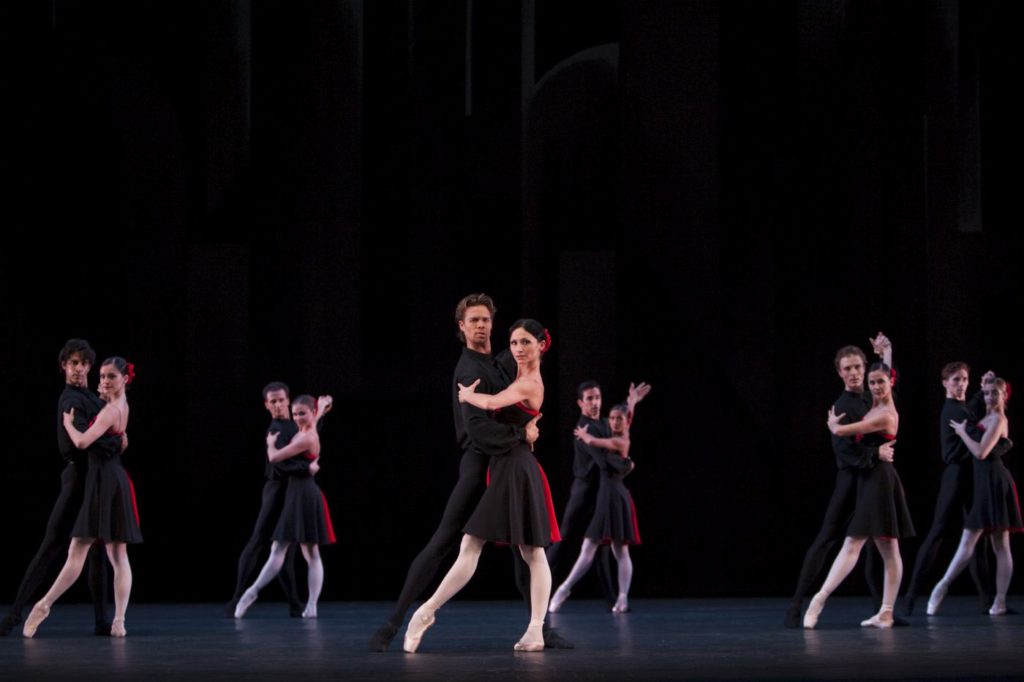
| Links: | Website of Hans van Manen | |
| Photos: | 1. | Hans van Manen, ca. 1980 © Gert Weigelt |
| 2. | Horst Koegler, ca. 1980 © Gert Weigelt | |
| “Grosse Fuge” | ||
| 3. | Ensemble, “Grosse Fuge” by Hans van Manen, Dutch National Ballet © Angela Sterling | |
| 4. | Rashaen Arts and Feline van Dijken, “Grosse Fuge” by Hans van Manen, Ballett am Rhein © Gert Weigelt | |
| 5. | Anna Tsygankova and ensemble, “Grosse Fuge” by Hans van Manen, Dutch National Ballet © Angela Sterling | |
| 6. | Paul Calderone, Claudine Schoch, Alexandre Simões, Julie Thirault, Rashaen Arts, Feline van Dijken, Bogdan Nicula, Doris Becker, “Grosse Fuge” by Hans van Manen, Ballett am Rhein © Gert Weigelt | |
| 7./8. | Ensemble, “Grosse Fuge” by Hans van Manen, Dutch National Ballet © Angela Sterling | |
| “Without Words” | ||
| 9./10. | Paul Calderon and Julie Thirault, “Without Words” by Hans van Manen, Ballett am Rhein © Gert Weigelt |
|
| 11. | Julie Thirault and Marcos Menha, “Without Words” by Hans van Manen, Ballett am Rhein © Gert Weigelt | |
| “Kammerballett” |
||
| 12. | Martí Fernandez Paixa, Alicia Amatriain, Jason Reilly, Pablo von Sternenfels, Daniel Camargo and Anna Osadcenko, “Kammerballett” by Hans van Manen, Stuttgart Ballet © Stuttgart Ballet | |
| 13. | Martí Fernandez Paixa and Anna Osadcenko, “Kammerballett” by Hans van Manen, Stuttgart Ballet © Stuttgart Ballet | |
| 14. | Daniel Camargo and Hyo-Jung Kang, “Kammerballett” by Hans van Manen, Stuttgart Ballet © Stuttgart Ballet | |
| 15. | Hans van Manen and Rachel Beaujean, rehearsal with Dutch National Ballet in 2015 © Altin Kaftira | |
| “Adagio Hammerklavier” | ||
| 16. | Daniel Camargo, Anna Tsygankova, Artur Shesterikov, Anna Ol, Jozef Varga and Igone de Jongh, “Adagio Hammerklavier” by Hans van Manen, Dutch National Ballet © Hans Gerritsen | |
| 17. | Larissa Lezhnina and Matthew Golding, Adagio Hammerklavier” by Hans van Manen, Dutch National Ballet © Stephanie Pistel | |
| 18. | Xenia Ostreikovskaya and Alexei Timofeyev, “Adagio Hammerklavier” by Hans van Manen, Maryinsky Ballet © Natasha Razina / Maryinsky Theatre | |
| “Live” | ||
| 19. | Igone de Jongh and Henk van Dijk, rehearsal of “Live” in 2015, chor.: Hans van Manen, Dutch National Ballet © Altin Kaftira | |
| 20. | Igone de Jongh and Marijn Rademaker, “Live” by Hans van Manen, Dutch National Ballet © Altin Kaftira | |
| 21.-25. | Igone de Jongh, “Live” by Hans van Manen, Dutch National Ballet © Altin Kaftira | |
| 26./27. | Igone de Jongh and Marijn Rademaker, “Live” by Hans van Manen, Dutch National Ballet © Altin Kaftira | |
| “Frank Bridge Variations” | ||
| 28. | Hyo-Jung Kang and David Moore, “Frank Bridge Variations” by Hans van Manen, Stuttgart Ballet © Stuttgart Ballet | |
| 29. | Marlúcia do Amaral and Remus Şucheană, “Frank Bridge Variations” by Hans van Manen, Ballett am Rhein © Gert Weigelt | |
| 30. | Ensemble, “Frank Bridge Variations” by Hans van Manen, Bolshoi Ballet © Mikhail Logvinov / Bolshoi Theatre | |
| 31. | Ekaterina Shipulina and Denis Rodkin, “Frank Bridge Variations” by Hans van Manen, Bolshoi Ballet © Mikhail Logvinov / Bolshoi Theatre |
|
| “Alltag” |
||
| 32. | Hans van Manen rehearsing “Alltag” with Martin Schläpfer, Ballett am Rhein © Gert Weigelt | |
| 33. | Martin Schläpfer and Hans van Manen rehearsing “Alltag”, Ballett am Rhein © Gert Weigelt | |
| 34. | Doris Becker, Alexandre Simões and Martin Schläpfer, “Alltag” by Hans van Manen, Ballett am Rhein © Gert Weigelt | |
| 35. | Martin Schläpfer, “Alltag” by Hans van Manen, Ballett am Rhein © Gert Weigelt | |
| 36. | Martin Schläpfer and Marlúcia do Amaral, “Alltag” by Hans van Manen, Ballett am Rhein © Gert Weigelt | |
| “Solo” | ||
| 37. | Sonny Locsin, Maksat Sydykov and Alexandre Simões, “Solo” by Hans van Manen, Ballett am Rhein © Gert Weigelt | |
| 38. | Daniel Camargo, “Solo” by Hans van Manen, Stuttgart Ballet © Stuttgart Ballet | |
| 39. | Alexander Sergeev, “Solo” by Hans van Manen, Maryinsky Ballet © Natasha Razina / Maryinsky Theatre |
|
| “Two Gold Variations” | ||
| 40. | Nathalie Guth, Alexandre Simões, Marlúcia do Amaral, Bruno Narnhammer and Norma Magalhães, “Two Gold Variations” by Hans van Manen, Ballett am Rhein © Gert Weigelt | |
| 41. | Ensemble, “Two Gold Variations” by Hans van Manen, Ballett am Rhein © Gert Weigelt | |
| 42. | Marlúcia do Amaral and Alexandre Simões, “Two Gold Variations” by Hans van Manen, Ballett am Rhein © Gert Weigelt | |
| “The Old Man and Me” | ||
| 43./44. | Martin Schläpfer and Marlúcia do Amaral, “The Old Man and Me” by Hans van Manen, Ballett am Rhein © Gert Weigelt | |
| 45. | Vladimir Malakhov and Beatrice Knop, “The Old Man and Me” by Hans van Manen, State Ballet Berlin © Bettina Stöß | |
| “Kleines Requiem” | ||
| 46. | Alexandre Simões and Feline van Dijken, “Kleines Requiem” by Hans van Manen, Ballett am Rhein © Gert Weigelt | |
| 47. | Remus Şucheană and Maksat Sydykov, “Kleines Requiem” by Hans van Manen, Ballett am Rhein © Gert Weigelt | |
| 48. | Julie Thirault, Alexandre Simões, Maksat Sydykov, Marlúcia do Amaral and Helge Freiberg, “Kleines Requiem” by Hans van Manen, Ballett am Rhein © Gert Weigelt | |
| “Compositie” | ||
| 49. | Julie Thirault, Alexandre Simões, Ainara García Navarro and Bogdan Nicula, “Compositie” by Hans van Manen, Ballett am Rhein © Gert Weigelt | |
| 50. | Julie Thirault and Bogdan Nicula, “Compositie” by Hans van Manen, Ballett am Rhein © Gert Weigelt | |
| 51. | Andriy Boyetskyy, Louisa Rachedi, Carolina Francisco Sorg and Ordep Rodriguez Chacon, “Compositie” by Hans van Manen, Ballett am Rhein © Gert Weigelt | |
| “Two” | ||
| 52.-54. | Marlúcia do Amaral and Remus Şucheană, “Two” by Hans van Manen, Ballett am Rhein © Gert Weigelt | |
| “Variations for Two Couples” | ||
| 55. | Jason Reilly and Anna Osadcenko, “Variations for Two Couples” by Hans van Manen, Stuttgart Ballet © Stuttgart Ballet | |
| 56. | Ulyana Lopatkina, Alina Somova, Timur Askerov, Konstantin Zverev, “Variations for Two Couples” by Hans van Manen, Maryinsky Ballet © Natasha Razina / Maryinsky Theatre | |
| 57. | Anna Osadcenko and Jason Reilly, “Variations for Two Couples” by Hans van Manen, Stuttgart Ballet © Stuttgart Ballet | |
| “5 Tangos” | ||
| 58. | Viktoria Tereshkina, Vladimir Shklyarov, Yekaterina Ivannikova and ensemble, “5 Tangos” by Hans van Manen, Maryinsky Ballet © Natasha Razina /Maryinsky Theatre | |
| 59. | Jozef Varga, “5 Tangos” by Hans van Manen, Dutch National Ballet © Angela Sterling | |
| 60. | Jurgita Dronina and Felipe Diaz, “5 Tangos” by Hans van Manen, Dutch National Ballet © Angela Sterling | |
| 61. | Matthew Golding and Anna Tsygankova, “5 Tangos” by Hans van Manen, Dutch National Ballet © Angela Sterling | |
| 62. | Matthew Golding, Anna Tsygankova and ensemble, “5 Tangos” by Hans van Manen, Dutch National Ballet © Angela Sterling | |
| Editing: | Ballet Review |
